Need a consultation? Call now:
Talk to our experts:
- Business Plan for Investors
- Bank/SBA Business Plan
- Operational/Strategic Planning
- E1 Treaty Trader Visa
- E2 Treaty Investor Visa
- Innovator Founder Visa
- UK Start-Up Visa
- UK Expansion Worker Visa
- Manitoba MPNP Visa
- Start-Up Visa
- Nova Scotia NSNP Visa
- British Columbia BC PNP Visa
- Self-Employed Visa
- OINP Entrepreneur Stream
- LMIA Owner Operator
- ICT Work Permit
- LMIA Mobility Program – C11 Entrepreneur
- USMCA (ex-NAFTA)
- Franchise Business Planning
- Landlord Business Plan
- Nonprofit Start-Up Business Plan
- USDA Business Plan
- Online Boutique
- Mobile Application
- Food Delivery
- Real Estate
- Business Continuity Plan
- Buy Side Due Diligence Services
- ICO whitepaper
- ICO consulting services
- Confidential Information Memorandum
- Private Placement Memorandum
- Feasibility study
- Fractional CFO
- How it works
- Business Plan Templates

How to Write a Business Plan to Start a Bank
Published Feb.29, 2024
Updated Sep.10, 2024
By: Alex Silensky
Average rating 5 / 5. Vote count: 5
No votes so far! Be the first to rate this post.
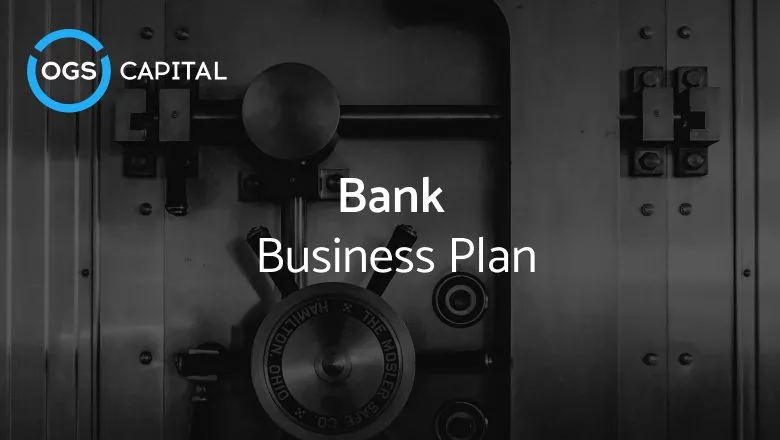
Table of Content
Bank Business Plan Checklist
A bank business plan is a document that describes the bank’s goals, strategies, operations, and financial projections. It communicates the bank’s vision and value proposition to potential investors, regulators, and stakeholders. A SBA business plan should be clear, concise, and realistic. It should also cover all the essential aspects of the bank’s business model.
Here is a checklist of the main sections that you should keep in mind while building a bank business plan:
- Executive summary
- Company description
- Industry analysis
- Competitive analysis
- Service or product list
- Marketing and sales plan
- Operations plan
- Management team
- Funding request
- Financial plan
Sample Business Plan for Bank
The following is a bank business plan template that operates in the USA. This bank business plan example is regarding ABC Bank, and it includes the following sections:
Executive Summary
ABC Bank is a new bank for California’s SMBs and individuals. We offer convenient banking services tailored to our customers’ needs and preferences. We have a large target market with over 500,000 SMBs spending billions on banking services annually. We have the licenses and approvals to operate our bank and raised $20 million in seed funding. We are looking for another $30 million in debt financing.
Our goal is to launch our bank by the end of 2024 and achieve the following objectives in the first five years of operation:
- Acquire 100,000 customers and 10% market share
- Generate $100 million in annual revenue and $20 million in net profit
- Achieve a return on equity (ROE) of 15% and a return on assets (ROA) of 1.5%
- Expand our network to 10 branches and 50 ATMs
- Increase our brand awareness and customer loyalty
Our bank has great potential to succeed and grow in the banking industry. We invite you to read the rest of our microfinance business plan to learn about how to set up a business plan for the bank and how we will achieve our goals.
Industry Analysis
California has one of the biggest and most active banking industries in the US and the world. According to the Federal Deposit Insurance Corp , California has 128 financial institutions, with total assets exceeding $560 billion.
The California banking industry is regulated and supervised by various federal and state authorities. However, they also face several risks and challenges, such as:
- High competition and consolidation
- Increasing regulation and compliance
- Rising customer demand for digital and mobile banking
- Cyberattacks and data breaches
- Environmental and social issues
The banking industry in California is highly competitive and fragmented. According to the FDIC, the top 10 banks and thrifts in California by total deposits as of June 30, 2023, were:
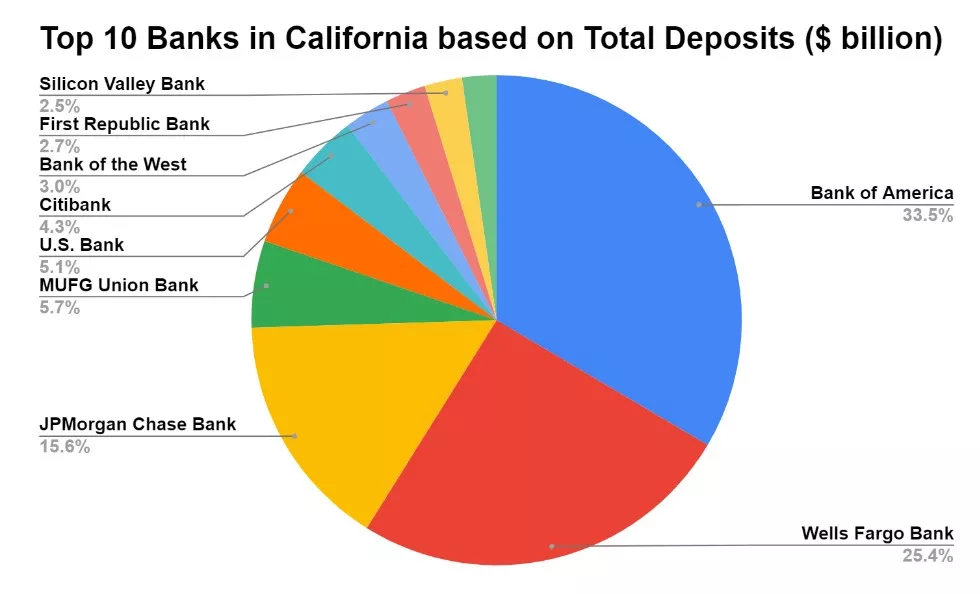
Customer Analysis
We serve SMBs who need local, easy, and cheap banking. We divide our customers into four segments by size, industry, location, and needs:
SMB Segment 1 – Tech SMBs in big cities of California. These are fast-growing, banking-intensive customers. They account for a fifth of our market share and a third of our revenue and are loyal and referable.
SMB Segment 2 – Entertainment SMBs in California’s entertainment hubs. These are high-profile, banking-heavy customers. They make up a sixth of our market and a fourth of our revenue and are loyal and influential.
SMB Segment 3 – Tourism SMBs in California’s tourist spots. These are seasonal, banking-dependent customers. They represent a quarter of our market and a fifth of our revenue and are loyal and satisfied.
SMB Segment 4 – Other SMBs in various regions of California. These are slow-growing, banking-light customers. They constitute two-fifths of our market and a quarter of our revenue and are loyal and stable.
Competitive Analysis
We compete with other banks and financial institutions that offer similar or substitute products and services to our target customers in our target market. We group our competitors into four categories based on their size and scope:
1. National Banks
- Key Players – Bank of America, Wells Fargo, JPMorgan Chase, Citibank, U.S. Bank
- Strengths – Large customer base, strong brand, extensive branch/ATM network, innovation, robust operations, solid financial performance
- Weaknesses – High competition, regulatory costs, low customer satisfaction, high attrition
- Strategies – Maintain dominance through customer acquisition/retention, revenue growth, efficiency
2. Regional Banks
- Key Players – MUFG Union Bank, Bank of the West, First Republic Bank, Silicon Valley Bank, East West Bank
- Strengths – Loyal customer base, brand recognition, convenient branch/ATM network, flexible operations
- Weaknesses – Moderate competition, regulatory costs, customer attrition
- Strategies – Grow market presence through customer acquisition/retention, revenue optimization, efficiency
3. Community Banks
- Key Players – Mechanics Bank, Bank of Marin, Pacific Premier Bank, Tri Counties Bank, Luther Burbank Savings
- Strengths – Small loyal customer base, reputation, convenient branches, ability to adapt
- Weaknesses – Low innovation and technology adoption
- Strategies – Maintain niche identity through customer loyalty, revenue optimization, efficiency
4. Online Banks
- Key Players – Ally Bank, Capital One 360, Discover Bank, Chime Bank, Varo Bank
- Strengths – Large growing customer base, strong brand, no branches, lean operations, high efficiency
- Weaknesses – High competition, regulatory costs, low customer satisfaction and trust, high attrition
- Strategies – Disrupt the industry by acquiring/retaining customers, optimizing revenue, improving efficiency
Market Research
Our market research shows that:
- California has a large, competitive, growing banking market with 128 banks and $560 billion in assets.
- Our target customers are the SMBs in California, which is 99.8% of the businesses and employ 7.2-7.4 million employees.
- Our main competitors are national and regional banks in California that offer similar banking products and services.
We conclude that:
- Based on the information provided in our loan officer business plan , there is a promising business opportunity for us to venture into and establish a presence in the banking market in California.
- We should focus on the SMBs in California, as they have various unmet banking needs, preferences, behavior, and a high potential for growth and profitability.
Operations Plan
Our operational structure and processes form the basis of our operations plan, and they are as follows:
- Location and Layout – We have a network of 10 branches and 50 ATMs across our target area in California. We strategically place our branches and ATMs in convenient and high-traffic locations.
- Equipment and Technology – We use modern equipment and technology to provide our products and services. We have computers and software for banking functions; security systems to protect branches and ATMs; communication systems to communicate with customers and staff; inventory and supplies to operate branches and ATMs.
- Suppliers and Vendors – We work with reliable suppliers and vendors that provide our inventory and supplies like cash, cards, paper, etc. We have supplier management systems to evaluate performance.
- Staff and Management – Our branches have staff like branch managers, customer service representatives, tellers, and ATM technicians with suitable qualifications and experience.
- Policies and Procedures – We have policies for customer service, cash handling, card handling, and paper handling to ensure quality, minimize losses, and comply with regulations. We use various tools and systems to implement these policies.
Management Team
The following individuals make up our management team:
- Earl Yao, CEO and Founder – Earl is responsible for establishing and guiding the bank’s vision, mission, strategy, and overall operations. He brings with him over 20 years of banking experience.
- Paula Wells, CFO and Co-Founder – Paula oversees financial planning, reporting, analysis, compliance, and risk management.
- Mark Hans, CTO – Mark leads our technology strategy, infrastructure, innovation, and digital transformation.
- Emma Smith, CMO – Emma is responsible for designing and implementing our marketing strategy and campaigns.
- David O’kane, COO – David manages the daily operations and processes of the bank ensuring our products and services meet the highest standards of quality and efficiency.
Financial Projections
Our assumptions and drivers form the basis of our financial projections, which are as follows:
Assumptions: We have made the following assumptions for our collection agency business plan :
- Start with 10 branches, 50 ATMs in January 2024
- Grow branches and ATMs 10% annually
- 10,000 customers per branch, 2,000 per ATM
- 5% average loan rate, 2% average deposit rate
- 80% average loan-to-deposit ratio
- $10 average fee per customer monthly
- $100,000 average operating expense per branch monthly
- $10,000 average operating expense per ATM monthly
- 25% average tax rate
Our financial projections are as per our:
- Projected Income Statement
- Projected Cash Flow Statement
- Projected Balance Sheet
- Projected Financial Ratios and Indicators
Select the Legal Framework for Your Bank
Our legal structure and requirements form the basis of our legal framework, which are as follows:
Legal Structure and Entity – We have chosen to incorporate our bank as a limited liability company (LLC) under the laws of California.
Members – We have two members who own and control our bank: Earl Yao and Paula Wells, the founders and co-founders of our bank.
Manager – We have appointed Mark Hans as our manager who oversees our bank’s day-to-day operations and activities.
Name – We have registered our bank’s name as ABC Bank LLC with the California Secretary of State. We have also obtained a trademark registration for our name and logo.
Registered Agent – We have designated XYZ Registered Agent Services LLC as our registered agent authorized to receive and handle legal notices and documents on behalf of our bank.
Licenses and Approvals – We have obtained the necessary licenses and approvals to operate our bank in California, including:
- Federal Deposit Insurance Corporation (FDIC) Insurance
- Federal Reserve System Membership
- California Department of Financial Protection and Innovation (DFPI) License
- Business License
- Employer Identification Number (EIN)
- Zoning and Building Permits
Legal Documents and Agreements – We have prepared and signed the necessary legal documents and agreements to form and operate our bank, including:
- Certificate of Formation
- Operating Agreement
- Membership Agreement
- Loan Agreement
- Card Agreement
- Paper Agreement
Keys to Success
We analyze our market, customers, competitors, and industry to determine our keys to success. We have identified the following keys to success for our bank.
Customer Satisfaction
Customer satisfaction is vital for any business, especially a bank relying on loyalty and referrals. It is the degree customers are happy with our products, services, and interactions. It is influenced by:
- Product and service quality – High-quality products and services that meet customer needs and preferences
- Customer service quality – Friendly, professional, and helpful customer service across channels
- Customer experience quality – Convenient, reliable, and secure customer access and transactions
We will measure satisfaction with surveys, feedback, mystery shopping, and net promoter scores. Our goal is a net promoter score of at least 8.
Operational Efficiency
Efficiency is key in a regulated, competitive environment. It is using resources and processes effectively to achieve goals and objectives. It is influenced by:
- Resource optimization – Effective and efficient use and control of capital, staff, and technology
- Process improvement – Streamlined, standardized processes measured for performance
- Performance management – Managing financial, operational, customer, and stakeholder performance
We will measure efficiency with KPIs, metrics, dashboards, and operational efficiency ratios. Our goal is an operational efficiency ratio below 50%.
Partner with OGSCapital for Your Bank Business Plan Success
Highly efficient service.
Highly Efficient Service! I am incredibly happy with the outcome; Alex and his team are highly efficient professionals with a diverse bank of knowledge.
Are you looking to hire business plan writers to start a bank business plan? At OGSCapital, we can help you create a customized and high-quality bank development business plan to meet your goals and exceed your expectations.
We have a team of senior business plan experts with extensive experience and expertise in various industries and markets. We will conduct thorough market research, develop a unique value proposition, design a compelling financial model, and craft a persuasive pitch deck for your business plan. We will also offer you strategic advice, guidance, and access to a network of investors and other crucial contacts.
We are not just a business plan writing service. We are a partner and a mentor who will support you throughout your entrepreneurial journey. We will help you achieve your business goals with smart solutions and professional advice. Contact us today and let us help you turn your business idea into a reality.
Frequently Asked Questions
How do I start a small bank business?
To start a small bank business in the US, you need to raise enough capital, understand how to make a business plan for the bank, apply for a federal or state charter, register your bank for taxes, open a business bank account, set up accounting, get the necessary permits and licenses, get bank insurance, define your brand, create your website, and set up your phone system.
Are banks profitable businesses?
Yes, banks are profitable businesses in the US. They earn money through interest on loans and fees for other services. The commercial banking industry in the US has grown 5.6% per year on average between 2018 and 2023.
Download Bank Business Plan Sample in pdf
OGSCapital’s team has assisted thousands of entrepreneurs with top-rated document, consultancy and analysis. They’ve helped thousands of SME owners secure more than $1.5 billion in funding, and they can do the same for you.

Any questions? Get in Touch!
We have been mentioned in the press:
Leave a Reply Cancel reply
Your email address will not be published. Required fields are marked *
Save my name, email, and website in this browser for the next time I comment.
Search the site:

Bank Business Plan Template
Written by Dave Lavinsky

Bank Business Plan
Over the past 20+ years, we have helped over 500 entrepreneurs and business owners create business plans to start and grow their banks.
If you’re unfamiliar with creating a bank business plan, you may think creating one will be a time-consuming and frustrating process. For most entrepreneurs it is, but for you, it won’t be since we’re here to help. We have the experience, resources, and knowledge to help you create a great business plan.
In this article, you will learn some background information on why business planning is important. Then, you will learn how to write a bank business plan step-by-step so you can create your plan today.
Download our Ultimate Business Plan Template here >
What Is a Bank Business Plan?
A business plan provides a snapshot of your bank as it stands today, and lays out your growth plan for the next five years. It explains your business goals and your strategies for reaching them. It also includes market research to support your plans.
Why You Need a Business Plan for Your Bank Business
If you’re looking to start a bank or grow your existing bank, you need a business plan. A business plan will help you raise funding, if needed, and plan out the growth of your bank to improve your chances of success. Your bank business plan is a living document that should be updated annually as your company grows and changes.
Sources of Funding for Banks
With regards to funding, the main sources of funding for a bank are personal savings, credit cards, bank loans, and angel investors. When it comes to bank loans, banks will want to review your business plan and gain confidence that you will be able to repay your loan and interest. To acquire this confidence, the loan officer will not only want to ensure that your financials are reasonable, but they will also want to see a professional plan. Such a plan will give them the confidence that you can successfully and professionally operate a business. Personal savings and bank loans are the most common funding paths for banks.
Finish Your Business Plan Today!
How to write a business plan for a bank.
If you want to start a bank or expand your current one, you need a business plan. The guide below details the necessary information for how to write each essential component of your bank business plan.
Executive Summary
Your executive summary provides an introduction to your business plan, but it is normally the last section you write because it provides a summary of each key section of your plan.
The goal of your executive summary is to quickly engage the reader. Explain to them the kind of bank you are running and the status. For example, are you a startup, do you have a bank that you would like to grow, or are you operating a chain of banks?
Next, provide an overview of each of the subsequent sections of your plan.
- Give a brief overview of the bank industry.
- Discuss the type of bank you are operating.
- Detail your direct competitors. Give an overview of your target customers.
- Provide a snapshot of your marketing strategy. Identify the key members of your team.
- Offer an overview of your financial plan.
Company Overview
In your company overview, you will detail the type of bank you are operating.
For example, you might specialize in one of the following types of banks:
- Commercial bank : this type of bank tends to concentrate on supporting businesses. Both large corporations and small businesses can turn to commercial banks if they need to open a checking or savings account, borrow money, obtain access to credit or transfer funds to companies in foreign markets.
- Credit union: this type of bank operates much like a traditional bank (issues loans, provides checking and savings accounts, etc.) but banks are for-profit whereas credit unions are not. Credit unions fall under the direction of their own members. They tend to serve people affiliated with a particular group, such as people living in the same area, low-income members of a community or armed service members. They also tend to charge lower fees and offer lower loan rates.
- Retail bank: retail banks can be traditional, brick-and-mortar brands that customers can access in-person, online, or through their mobile phones. They also offer general public financial products and services such as bank accounts, loans, credit cards, and insurance.
- Investment bank: this type of bank manages the trading of stocks, bonds, and other securities between companies and investors. They also advise individuals and corporations who need financial guidance, reorganize companies through mergers and acquisitions, manage investment portfolios or raise money for certain businesses and the federal government.
In addition to explaining the type of bank you will operate, the company overview needs to provide background on the business.
Include answers to questions such as:
- When and why did you start the business?
- What milestones have you achieved to date? Milestones could include the number of clients served, the number of clients with positive reviews, reaching X number of clients served, etc.
- Your legal business Are you incorporated as an S-Corp? An LLC? A sole proprietorship? Explain your legal structure here.
Industry Analysis
In your industry or market analysis, you need to provide an overview of the bank industry.
While this may seem unnecessary, it serves multiple purposes.
First, researching the bank industry educates you. It helps you understand the market in which you are operating.
Secondly, market research can improve your marketing strategy, particularly if your analysis identifies market trends.
The third reason is to prove to readers that you are an expert in your industry. By conducting the research and presenting it in your plan, you achieve just that.
The following questions should be answered in the industry analysis section of your bank business plan:
- How big is the bank industry (in dollars)?
- Is the market declining or increasing?
- Who are the key competitors in the market?
- Who are the key suppliers in the market?
- What trends are affecting the industry?
- What is the industry’s growth forecast over the next 5 – 10 years?
- What is the relevant market size? That is, how big is the potential target market for your bank? You can extrapolate such a figure by assessing the size of the market in the entire country and then applying that figure to your local population.
Customer Analysis
The customer analysis section of your bank business plan must detail the customers you serve and/or expect to serve.
The following are examples of customer segments: individuals, small businesses, families, and corporations.
As you can imagine, the customer segment(s) you choose will have a great impact on the type of bank you operate. Clearly, corporations would respond to different marketing promotions than individuals, for example.
Try to break out your target customers in terms of their demographic and psychographic profiles. With regards to demographics, including a discussion of the ages, genders, locations, and income levels of the potential customers you seek to serve.
Psychographic profiles explain the wants and needs of your target customers. The more you can recognize and define these needs, the better you will do in attracting and retaining your customers.
Finish Your Bank Business Plan in 1 Day!
Don’t you wish there was a faster, easier way to finish your business plan?
With Growthink’s Ultimate Business Plan Template you can finish your plan in just 8 hours or less!
Competitive Analysis
Your competitive analysis should identify the indirect and direct competitors your business faces and then focus on the latter.
Direct competitors are other banks.
Indirect competitors are other options that customers have to purchase from that aren’t directly competing with your product or service. This includes trust accounts, investment companies, or the stock market. You need to mention such competition as well.
For each such competitor, provide an overview of their business and document their strengths and weaknesses. Unless you once worked at your competitors’ businesses, it will be impossible to know everything about them. But you should be able to find out key things about them such as
- What types of customers do they serve?
- What type of bank are they?
- What is their pricing (premium, low, etc.)?
- What are they good at?
- What are their weaknesses?
With regards to the last two questions, think about your answers from the customers’ perspective. And don’t be afraid to ask your competitors’ customers what they like most and least about them.
The final part of your competitive analysis section is to document your areas of competitive advantage. For example:
- Will you provide loans and retirement savings accounts?
- Will you offer products or services that your competition doesn’t?
- Will you provide better customer service?
- Will you offer better pricing?
Think about ways you will outperform your competition and document them in this section of your plan.
Marketing Plan
Traditionally, a marketing plan includes the four P’s: Product, Price, Place, and Promotion. For a bank business plan, your marketing strategy should include the following:
Product : In the product section, you should reiterate the type of bank company that you documented in your company overview. Then, detail the specific products or services you will be offering. For example, will you provide savings accounts, auto loans, mortgage loans, or financial advice?
Price : Document the prices you will offer and how they compare to your competitors. Essentially in the product and price sub-sections of your plan, you are presenting the products and/or services you offer and their prices.
Place : Place refers to the site of your bank. Document where your company is situated and mention how the site will impact your success. For example, is your bank located in a busy retail district, a business district, a standalone office, or purely online? Discuss how your site might be the ideal location for your customers.
Promotions : The final part of your bank marketing plan is where you will document how you will drive potential customers to your location(s). The following are some promotional methods you might consider:
- Advertise in local papers, radio stations and/or magazines
- Reach out to websites
- Distribute flyers
- Engage in email marketing
- Advertise on social media platforms
- Improve the SEO (search engine optimization) on your website for targeted keywords
Operations Plan
While the earlier sections of your business plan explained your goals, your operations plan describes how you will meet them. Your operations plan should have two distinct sections as follows.
Everyday short-term processes include all of the tasks involved in running your bank, including reconciling accounts, customer service, accounting, etc.
Long-term goals are the milestones you hope to achieve. These could include the dates when you expect to sign up your Xth customer, or when you hope to reach $X in revenue. It could also be when you expect to expand your bank to a new city.
Management Team
To demonstrate your bank’s potential to succeed, a strong management team is essential. Highlight your key players’ backgrounds, emphasizing those skills and experiences that prove their ability to grow a company.
Ideally, you and/or your team members have direct experience in managing banks. If so, highlight this experience and expertise. But also highlight any experience that you think will help your business succeed.
If your team is lacking, consider assembling an advisory board. An advisory board would include 2 to 8 individuals who would act as mentors to your business. They would help answer questions and provide strategic guidance. If needed, look for advisory board members with experience in managing a bank or successfully running a small financial advisory firm.
Financial Plan
Your financial plan should include your 5-year financial statement broken out both monthly or quarterly for the first year and then annually. Your financial statements include your income statement, balance sheet, and cash flow statements.
Income Statement
An income statement is more commonly called a Profit and Loss statement or P&L. It shows your revenue and then subtracts your costs to show whether you turned a profit or not.
In developing your income statement, you need to devise assumptions. For example, will you see 5 clients per day, and/or offer sign up bonuses? And will sales grow by 2% or 10% per year? As you can imagine, your choice of assumptions will greatly impact the financial forecasts for your business. As much as possible, conduct research to try to root your assumptions in reality.
Balance Sheets
Balance sheets show your assets and liabilities. While balance sheets can include much information, try to simplify them to the key items you need to know about. For instance, if you spend $50,000 on building out your bank, this will not give you immediate profits. Rather it is an asset that will hopefully help you generate profits for years to come. Likewise, if a lender writes you a check for $50,000, you don’t need to pay it back immediately. Rather, that is a liability you will pay back over time.
Cash Flow Statement
Your cash flow statement will help determine how much money you need to start or grow your business, and ensure you never run out of money. What most entrepreneurs and business owners don’t realize is that you can turn a profit but run out of money and go bankrupt.
When creating your Income Statement and Balance Sheets be sure to include several of the key costs needed in starting or growing a bank:
- Cost of furniture and office supplies
- Payroll or salaries paid to staff
- Business insurance
- Other start-up expenses (if you’re a new business) like legal expenses, permits, computer software, and equipment
Attach your full financial projections in the appendix of your plan along with any supporting documents that make your plan more compelling. For example, you might include your bank location lease or a list of accounts and loans you plan to offer.
Writing a business plan for your bank is a worthwhile endeavor. If you follow the template above, by the time you are done, you will truly be an expert. You will understand the bank industry, your competition, and your customers. You will develop a marketing strategy and will understand what it takes to launch and grow a successful bank.
Don’t you wish there was a faster, easier way to finish your Bank business plan?
OR, Let Us Develop Your Plan For You
Since 1999, Growthink has developed business plans for thousands of companies who have gone on to achieve tremendous success. Click here to see how a Growthink business plan consultant can create your business plan for you.
Other Helpful Business Plan Articles & Templates


Crafting a Business Plan for Bank Approval: A Step-by-Step Guide

Get Full Bundle
| $169$99 | $59$39 | $39$29 | $15$9 | $25$15 | $15$9 | $15$9 | $15$9 | $19 |
Total Bundle:
Launching a successful banking business requires meticulous planning and preparation. Before drafting your business plan, it's crucial to follow a comprehensive 9-step checklist that covers essential elements such as market research, financial projections, and stakeholder partnerships. By addressing these key areas upfront, you'll be well-equipped to navigate the complexities of the banking industry and set your venture on the path to long-term success.
Steps Prior To Business Plan Writing
| Step | Key Considerations |
|---|---|
| Conduct thorough market research and analysis | Analyze the current banking landscape, including market trends, competitor activities, and customer preferences. Gather data on the target market's demographics, financial behaviors, and pain points. Quantifiable metrics: Market size, growth rate, customer segmentation, and competitive benchmarking. |
| Identify target customers and their financial needs | Clearly define the bank's target customer base, including their specific financial requirements, risk profiles, and preferred banking channels. Quantifiable metrics: Customer segmentation, average account balances, and transaction volumes. |
| Determine the unique value proposition and competitive advantages | Identify the bank's unique offerings, services, and features that differentiate it from competitors. Assess the competitive landscape and pinpoint the bank's competitive advantages. Quantifiable metrics: Pricing, product features, and customer satisfaction ratings. |
| Assess the regulatory environment and obtain necessary licenses | Thoroughly understand the applicable banking regulations, compliance requirements, and necessary licenses or permits to operate in the target market. Quantifiable metrics: Regulatory capital requirements, licensing fees, and compliance reporting timelines. |
| Develop a detailed financial projection and funding strategy | Prepare comprehensive financial projections, including revenue streams, operating expenses, capital requirements, and funding sources. Quantifiable metrics: Projected income statements, balance sheets, cash flow statements, and funding sources (e.g., equity, debt, or a combination). |
| Assemble a strong management team with relevant expertise | Identify and recruit a diverse and experienced management team with a proven track record in the banking industry. Quantifiable metrics: Years of relevant experience, educational qualifications, and previous accomplishments. |
| Establish partnerships with key stakeholders and service providers | Develop strategic partnerships with financial institutions, technology providers, regulatory bodies, and other relevant stakeholders to enhance the bank's capabilities and reach. Quantifiable metrics: Number of partnerships, revenue-sharing arrangements, and service-level agreements. |
| Create a comprehensive operational plan and infrastructure | Outline the bank's operational processes, including branch network, digital banking platforms, risk management frameworks, and customer service protocols. Quantifiable metrics: Branch locations, technology investments, operational efficiency metrics, and customer satisfaction scores. |
| Define a clear marketing and customer acquisition strategy | Develop a robust marketing strategy to effectively reach and attract the target customer base, including branding, advertising, and customer acquisition channels. Quantifiable metrics: Marketing budget, customer acquisition costs, and customer retention rates. |
Conduct Thorough Market Research and Analysis
Developing a successful bank business plan begins with a comprehensive understanding of the market landscape. As a startup Community Trust Microbank , it is crucial to conduct in-depth market research and analysis to identify the unique opportunities and challenges within the financial services industry, particularly in the underserved communities you aim to serve.
The first step is to analyze the overall banking and financial services market in your target geographic area. This includes examining market size, growth trends, competitive landscape, and the evolving needs and preferences of potential customers. By gathering and analyzing data from reliable industry sources, government reports, and customer surveys, you can gain valuable insights into the current state of the market and identify untapped segments or underserved niches that your bank can potentially target.
- Utilize industry research reports, market studies, and financial data to understand the size, growth, and dynamics of the local banking market.
- Conduct customer surveys and focus groups to gather in-depth insights into the financial needs, pain points, and preferences of your target demographic.
- Analyze the competitive landscape, including the strengths, weaknesses, and unique value propositions of existing banks and financial institutions in the region.
Next, it is crucial to identify your target customer segments and their specific financial needs. By segmenting the market based on factors such as income level, age, occupation, and financial behavior, you can develop a deep understanding of your potential customers and tailor your bank's products and services to meet their unique requirements. This targeted approach will enable you to craft a compelling value proposition and differentiate your Community Trust Microbank from the competition.
Furthermore, you should assess the regulatory environment in which your bank will operate. This includes understanding the relevant laws, regulations, and licensing requirements governing the financial services industry in your region. By proactively addressing these regulatory considerations, you can ensure that your bank operates in compliance with all applicable laws and regulations, minimizing potential legal and financial risks.
By conducting thorough market research and analysis, you will be well-equipped to develop a robust bank business plan that aligns with the needs of your target customers, the competitive landscape, and the regulatory environment. This foundation will serve as a crucial starting point for the subsequent steps in the bank business planning process.
| Bank Business Plan Get Template |
Identify Target Customers and Their Financial Needs
Identifying your target customers and understanding their unique financial needs is a critical step in developing a successful business plan for your bank. This process involves in-depth market research and analysis to gain insights into the demographics, behaviors, and pain points of the individuals and businesses you aim to serve.
When it comes to the banking industry, the target customer base can vary significantly depending on the bank's strategic focus and positioning. For example, Community Trust Microbank aims to cater to economically underserved communities, with a specific emphasis on providing tailored financial services and education to those who may have limited access to traditional banking options.
To identify your target customers and their financial needs, consider the following key steps:
- Conduct Comprehensive Market Research : Gather data on the local and regional demographics, including income levels, employment trends, and financial literacy rates. Analyze the competitive landscape to understand the existing banking options and their strengths and weaknesses.
- Segment the Market : Divide your potential customer base into distinct segments based on factors such as age, income, geographic location, and financial needs. This will help you develop targeted products and services that address the specific requirements of each segment.
- Engage with the Community : Reach out to community organizations, local businesses, and industry groups to better understand the financial challenges and pain points faced by your target customers. This feedback can be invaluable in shaping your product and service offerings.
- Analyze Customer Behavior and Preferences : Gather data on customer behavior, such as transaction patterns, channel preferences, and pain points in their current banking experiences. Use this information to identify opportunities to provide innovative and tailored solutions that address their unmet needs.
- Leverage data-driven insights to create customer personas that represent your ideal target segments, including their demographics, financial goals, and pain points.
- Continuously monitor and update your understanding of your target customers as their needs and preferences evolve over time.
By thoroughly understanding your target customers and their financial needs, you can develop a business plan that aligns your bank's products, services, and operations to deliver a compelling value proposition and drive sustainable growth.
Determine the Unique Value Proposition and Competitive Advantages
Crafting a strong and differentiated value proposition is a crucial step in developing a successful business plan for Community Trust Microbank. This process involves identifying the unique benefits and features that set the bank apart from its competitors, and aligning them with the specific financial needs and preferences of the target customer base.
To determine the unique value proposition, the bank should start by conducting a thorough analysis of the local market and the competitive landscape. This includes evaluating the current offerings, pricing structures, and pain points of existing financial institutions serving the underserved communities. By understanding the gaps in the market and the unmet needs of the target customers, the bank can position itself as the preferred solution.
- Analyze the market and competition to identify unique opportunities and pain points of the target customers.
- Leverage the bank's expertise in microfinance and financial literacy to develop tailored products and services that address the specific needs of the community.
- Emphasize the bank's commitment to empowering economically underserved individuals and fostering sustainable economic growth within the community.
One of the key competitive advantages that Community Trust Microbank can leverage is its specialized focus on microfinance and financial education. By offering small-scale loans, minimal fees, and comprehensive financial literacy programs, the bank can position itself as a trusted partner that empowers individuals to take control of their financial well-being and achieve their economic goals.
Additionally, the bank can highlight its deep understanding of the local community and its ability to tailor its products and services to meet the unique needs of its clients. This can include offering flexible repayment schedules, providing personalized guidance, and fostering close relationships with borrowers to ensure their long-term success.
- Emphasize the bank's specialized expertise in microfinance and its commitment to financial education and empowerment.
- Highlight the bank's deep understanding of the local community and its ability to customize solutions to meet their specific needs.
- Leverage the bank's community-focused approach and its reputation as a trusted partner to differentiate it from larger, impersonal financial institutions.
By clearly articulating the unique value proposition and competitive advantages, Community Trust Microbank can create a compelling and differentiated business plan that resonates with its target customers and sets it up for long-term success. This strategic positioning will be a key driver in attracting funding, building partnerships, and establishing the bank as a leader in the community banking space.
Assess the regulatory environment and obtain necessary licenses
Navigating the regulatory landscape is a critical step in establishing a successful bank. The banking industry is highly regulated, and compliance with various laws, rules, and regulations is essential to ensure the legitimacy and stability of your financial institution. Before you can start drafting your business plan, it's crucial to thoroughly understand the regulatory requirements that apply to your bank.
The first step is to research the specific licensing and regulatory requirements in your jurisdiction. This may include obtaining a banking charter, securing necessary licenses and permits, and complying with capital adequacy requirements, anti-money laundering (AML) regulations, and consumer protection laws. Depending on the scope and nature of your bank's operations, you may need to obtain licenses at the federal, state, and even local levels.
- Familiarize yourself with the Federal Deposit Insurance Corporation (FDIC) requirements for obtaining a bank charter and deposit insurance.
- Understand the Community Reinvestment Act (CRA) and its impact on your bank's lending and community engagement practices.
- Ensure compliance with Know Your Customer (KYC) and Customer Due Diligence (CDD) regulations to prevent financial crimes.
It's also essential to stay up-to-date with any changes in the regulatory environment, as new laws and regulations can significantly impact your bank's operations and compliance requirements. Regularly monitoring industry news, consulting with legal and compliance experts, and participating in industry associations can help you stay informed and adapt to the evolving regulatory landscape.
Obtaining the necessary licenses and permits can be a complex and time-consuming process, so it's important to start this step early in your business planning. Failure to comply with regulatory requirements can result in hefty fines, legal penalties, and even the revocation of your banking license, which can be devastating for your business. By proactively addressing the regulatory environment, you can ensure that your bank is positioned for long-term success and compliance.
According to the Federal Reserve , the average time it takes to obtain a new bank charter in the United States is 12-18 months . This timeline can vary depending on the complexity of your bank's operations and the specific regulatory requirements in your jurisdiction. It's crucial to factor in this timeline when developing your business plan and funding strategy.
In addition to the initial licensing and regulatory requirements, your bank will also need to establish ongoing compliance processes and procedures. This may include regular reporting, audits, and maintaining adequate capital reserves. By prioritizing regulatory compliance from the outset, you can ensure that your bank operates within the bounds of the law and avoids costly penalties or legal issues down the line.
| Bank Financial Model Get Template |
Develop a Detailed Financial Projection and Funding Strategy
Crafting a comprehensive financial plan is a crucial step in developing a successful business plan for Community Trust Microbank. This step involves creating detailed financial projections and outlining a robust funding strategy to ensure the bank's long-term viability and growth.
Financial Projections: Developing accurate financial projections is essential for the bank's success. This includes forecasting revenue streams, operating expenses, capital expenditures, and cash flow for the first 3-5 years of operation. These projections should be based on thorough market research, industry benchmarks, and realistic assumptions about the bank's growth trajectory.
Key elements of the financial projections should include:
- Income Statement: Projecting the bank's anticipated revenue, expenses, and net income over time.
- Balance Sheet: Forecasting the bank's assets, liabilities, and equity to ensure a strong financial position.
- Cash Flow Statement: Estimating the bank's cash inflows and outflows to maintain sufficient liquidity.
- Capital Requirements: Determining the amount of capital needed to meet regulatory requirements and fund the bank's operations and growth.
- Utilize historical data, industry benchmarks, and sensitivity analysis to ensure the financial projections are realistic and account for potential risks and uncertainties.
- Consult with financial experts, such as accountants or financial advisors, to validate the assumptions and methodology used in the financial projections.
Funding Strategy: Alongside the financial projections, the business plan should outline a comprehensive funding strategy to secure the necessary capital to launch and sustain the bank's operations. This may include a combination of the following funding sources:
- Equity Financing: Raising capital from investors, such as venture capitalists, angel investors, or community development financial institutions (CDFIs).
- Debt Financing: Obtaining loans or lines of credit from banks, government agencies, or other financial institutions.
- Grants and Subsidies: Exploring opportunities for grants or subsidies from government programs, foundations, or other organizations that support community development initiatives.
- Ensure the funding strategy aligns with the bank's growth plans and regulatory requirements, such as maintaining adequate capital ratios.
- Develop a plan for ongoing funding needs, including potential future rounds of financing or refinancing options.
By developing detailed financial projections and a comprehensive funding strategy, Community Trust Microbank can demonstrate the financial viability and sustainability of its business model, which will be crucial in securing the necessary funding and support to launch and grow the bank successfully.
Assemble a Strong Management Team with Relevant Expertise
Assembling a strong management team is a crucial step in developing a comprehensive business plan for your bank. The individuals you bring on board will be responsible for steering the organization towards success, ensuring effective operations, and making strategic decisions that align with your overall vision.
When building your bank's management team, it is essential to prioritize relevant expertise and a proven track record. Your team should possess a diverse range of skills and experience that complement each other, covering areas such as finance, operations, risk management, compliance, and customer service.
- Aim to assemble a team with a mix of industry veterans and emerging talent to leverage both experience and fresh perspectives.
- Carefully evaluate each candidate's qualifications, leadership abilities, and alignment with your bank's core values and mission.
- Consider appointing a seasoned Chief Executive Officer (CEO) to provide strategic direction and oversee the overall management of the bank.
In the banking industry, regulatory compliance is of paramount importance. Your management team should have a deep understanding of the relevant laws, regulations, and industry standards that govern the financial services sector. This expertise will ensure that your bank operates in a compliant and risk-averse manner, mitigating potential legal and reputational issues.
Moreover, your management team should possess the ability to effectively manage financial projections, develop sound risk management strategies, and implement robust operational processes. These capabilities will be crucial in ensuring the long-term sustainability and profitability of your bank.
According to a study by the Kauffman Foundation , 92% of successful startups have a management team with prior industry experience. This underscores the importance of assembling a team with the right mix of skills, expertise, and industry knowledge to drive your bank's success.
By carefully curating your management team, you will be well-positioned to navigate the complexities of the banking industry, capitalize on market opportunities, and build a thriving and resilient financial institution that serves the needs of your target community.
Establish partnerships with key stakeholders and service providers
Establishing strategic partnerships is a crucial step in the development of a successful bank business plan. By aligning with key stakeholders and service providers, community-focused banks like Community Trust Microbank can leverage valuable resources, expertise, and networks to enhance their service offerings and reach a wider customer base.
One of the primary partnerships for a community bank should be with local community organizations, non-profits, and government agencies that serve the target underserved population. These partnerships can provide valuable insights into the unique financial needs and challenges faced by the community, as well as facilitate referrals and co-marketing opportunities. For example, Community Trust Microbank could partner with local housing authorities, job training programs, and small business development centers to identify potential clients and offer tailored financial services.
Additionally, building relationships with financial service providers, such as payment processors, credit bureaus, and regulatory compliance specialists, can help Community Trust Microbank streamline its operations, ensure regulatory compliance, and offer a more comprehensive suite of services to its clients. These partnerships can also provide access to specialized technology, data, and industry expertise that may be beyond the bank's internal capabilities.
Another key partnership for a community bank is with local banking institutions, credit unions, and alternative financial providers. By collaborating with these entities, Community Trust Microbank can explore opportunities for referrals, co-lending, and shared infrastructure, ultimately expanding its reach and resources without the need for significant capital investment.
- Identify potential partners that align with your bank's mission and target market, and that can provide complementary services or resources.
- Develop formal partnership agreements that clearly outline the roles, responsibilities, and benefits for both parties.
- Regularly review and evaluate the effectiveness of your partnerships to ensure they continue to support your bank's growth and strategic objectives.
By cultivating a robust network of strategic partnerships, Community Trust Microbank can leverage the expertise, resources, and customer base of its partners to enhance its own capabilities, reduce operational costs, and ultimately better serve the financial needs of its target community. This collaborative approach is a key component of a comprehensive bank business plan that prioritizes community engagement and sustainable growth.
| Bank Pitch Deck |
Create a Comprehensive Operational Plan and Infrastructure
Establishing a robust operational plan and infrastructure is a critical step in developing a successful bank business plan. This encompasses the detailed planning and implementation of the bank's day-to-day operations, technology systems, and physical infrastructure to support its financial services and customer experience.
To create a comprehensive operational plan and infrastructure for your bank, consider the following key elements:
- Operational Processes and Workflows: Clearly define the bank's core operational processes, including account opening, loan origination, transaction processing, customer service, and compliance. Develop standardized workflows and procedures to ensure efficiency, consistency, and regulatory compliance.
- Technology and Systems: Invest in a robust and scalable technology infrastructure, including core banking systems, customer relationship management (CRM) software, data management and analytics tools, and cybersecurity measures. Ensure seamless integration and automation across the bank's operations.
- Branch and Facility Planning: Determine the optimal number, location, and design of the bank's physical branches and facilities to serve the target market effectively. Consider factors such as accessibility, visibility, and cost-efficiency.
- Staffing and Training: Assemble a skilled and experienced team to manage and execute the bank's operations, including roles in customer service, risk management, compliance, and IT support. Develop comprehensive training programs to ensure employees are equipped with the necessary knowledge and skills.
- Partnerships and Outsourcing: Identify opportunities to collaborate with third-party service providers, such as payment processors, credit bureaus, and regulatory compliance experts, to enhance the bank's operational capabilities and efficiency.
- Regularly review and update the bank's operational plan to adapt to changing market conditions, technological advancements, and regulatory requirements.
- Implement robust risk management and business continuity strategies to ensure the bank's operations can withstand unexpected disruptions or crises.
- Leverage data and analytics to continuously optimize the bank's operational processes and identify areas for improvement.
By developing a comprehensive operational plan and infrastructure, Community Trust Microbank can ensure the efficient and effective delivery of its financial services, while maintaining a strong focus on serving the needs of its target market and fostering sustainable growth.
Define a Clear Marketing and Customer Acquisition Strategy
Developing a comprehensive marketing and customer acquisition strategy is a crucial step in the business plan for your bank. This strategy will serve as the foundation for effectively reaching and engaging your target audience, ultimately driving growth and success for your financial institution.
To define your marketing and customer acquisition strategy, you'll need to start by thoroughly understanding your target customers. Conduct in-depth market research to identify their demographics, financial needs, and preferred channels of engagement. This will help you tailor your marketing efforts to resonate with your audience and address their specific pain points.
- Leverage data analytics and customer segmentation to create personalized marketing campaigns that speak directly to your target audience.
- Explore various marketing channels, such as social media, content marketing, and local community outreach, to reach your customers where they are most active.
- Prioritize building a strong brand identity that communicates your bank's unique value proposition and resonates with your target customers.
In addition to your marketing strategy, you'll need to develop a comprehensive customer acquisition plan. This plan should outline the specific tactics and channels you'll use to attract new customers and onboard them effectively. Consider implementing a multi-pronged approach that combines digital marketing, referral programs, strategic partnerships, and community engagement initiatives.
To ensure the success of your customer acquisition efforts, it's crucial to set clear targets and key performance indicators (KPIs). Regularly track and analyze your marketing and customer acquisition metrics, such as website traffic, lead conversion rates, and new account openings. Use this data to continuously refine your strategies and optimize your efforts for maximum impact.
By defining a clear and well-executed marketing and customer acquisition strategy, you can position your bank for sustainable growth and long-term success. Remember to stay agile, adapt to changing market conditions, and continuously innovate to meet the evolving needs of your target customers.
Related Blogs
- 7 Mistakes to Avoid When Starting a Bank in the US?
- What Are The Top 9 Business Benefits Of Starting A Bank Business?
- What Are The Nine Best Ways To Boost A Bank Business?
- What Are Nine Methods To Effectively Brand A Bank Business?
- Bank Business Idea Description in 5 W’s and 1 H Format
- Get Your Dream Bank Business: Proven Checklist!
- What Are The Reasons For The Failure Of Bank Businesses?
- How To Fund Or Get Money To Start A Bank Business?
- How To Name A Bank Business?
- Bank Owner Earnings: A Comprehensive Guide
- Opening a Bank: What You Need to Prepare for a Smooth Start
- 7 Strategic KPIs for Banks to Monitor
- What to Know About Bank Operating Expenses
- What Are The Top Nine Pain Points Of Running A Bank Business?
- Unlock Your Bank Business Potential: Perfect Your Pitch Deck Now!
- How Banks Can Increase Profitability and Improve Services
- What Are Nine Strategies To Effectively Promote And Advertise A Bank Business?
- The Complete Guide To Bank Business Financing And Raising Capital
- Strategies To Increase Your Bank Sales & Profitability
- What Are The Best Nine Strategies For Scaling And Growing A Bank Business?
- How To Sell Bank Business in 9 Steps: Checklist
- What Are The Essential Startup Costs For A New Bank?
- What Are The Key Factors For Success In A Bank Business?
- Valuing a Bank Business: Step-by-Step Guide
- Banking Without Cash: Your Complete Guide to No Money Accounts
| Expert-built startup financial model templates |
Leave a comment
Your email address will not be published. Required fields are marked *
Please note, comments must be approved before they are published
Financial modeling spreadsheets and templates in Excel & Google Sheets
- Your cart is empty.

Bank Business Plan: Transformative Strategies for Modern Businesses

A Bank Business Plan requires innovative strategies to thrive in today’s digital marketplace. Embracing digital transformation is key for modern banking success.
Crafting a robust Bank Business Plan is vital for financial institutions seeking to stay relevant in the fast-evolving banking sector. By integrating transformative strategies, banks can harness technology’s power, optimize customer experiences, and improve operational efficiency. This shift towards modernization necessitates a plan that addresses the digital demands of consumers while also targeting sustainable growth.
A successful strategy focuses on embracing digital services, fostering fintech partnerships, and ensuring cybersecurity. In our introduction, we will outline the steps necessary for banks to craft a plan that positions them at the forefront of innovation, meeting the expectations of tech-savvy customers and standing out in a competitive market.

Credit: appinventiv.com
Introduction To Bank Business Planning
Embarking on the journey of a bank business plan involves a thorough understanding of both the financial landscape and the evolutionary processes that continue to shape it. In this era of rapid digital transformation, traditional banking frameworks are undergoing a seismic shift, necessitating a strategic approach to ensure success. The convergence of technology, customer needs, and regulatory environments has propelled the importance of a comprehensive bank business plan to the forefront of organizational priorities. This guide serves to dissect the pivotal elements, offering insight into devising a transformative strategy for modern banking enterprises.
Understanding The Importance Of Strategic Planning
In a sector governed by meticulous regulation, strategic planning stands as the cornerstone of banking operations. A well-crafted strategy not only provides a roadmap for navigating the complex financial landscape but also establishes a clear vision and goals for future growth. It ensures agility in a competitive market, the capability to respond to unforeseen challenges, and the foresight to seize emerging opportunities. The stark difference between banks with a robust strategic plan and those without is evident in their performance and resilience, making strategic planning an indispensable facet of bank business planning.
The Evolution Of Banking And Its Impact On Business Plans
The banking landscape has transformed dramatically over the years, influenced by technological advancements and changing consumer behaviors. The digital age has introduced novel banking channels and products, compelling banks to revisit their business models. This evolution impacts the development of business plans, requiring an acute emphasis on inclusivity of modern trends. Banks must now integrate technological innovation , data analytics , and cybersecurity into their core strategic objectives to remain relevant and competitive.
Essential Components Of A Bank Business Plan
A bank business plan is an intricate tapestry woven from multiple crucial elements. Each component plays a specific role in the formation of a cohesive and effective strategy:
- Executive Summary : A compelling overview articulating the bank’s mission, vision, and key objectives.
- Market Analysis : A deep dive into market trends, customer demographics, and competitive landscapes.
- Organization and Management : An outline of the bank’s organizational structure, governance policies, and leadership team.
- Products and Services : A comprehensive portfolio of banking products and service offerings.
- Marketing Plan : Strategies for customer acquisition, retention, and brand positioning.
- Operations Plan : Operational workflows, technology infrastructure, and branch network optimization.
- Financial Plan : Projections of the bank’s financial health, including balance sheets, income statements, and cash flow analyses.
- Risk Management Framework : Identifying potential risks and outlining mitigation strategies.
Together, these components formulate the backbone of a bank business plan, setting the stage for sustainable growth and operational excellence in a rapidly evolving sector.
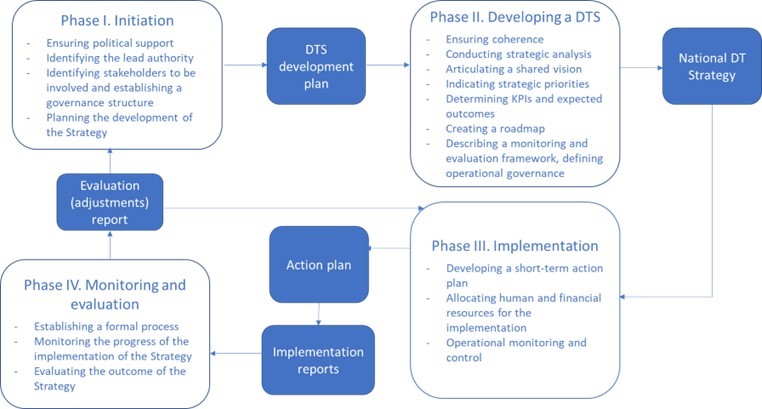
Credit: digitalregulation.org
Leveraging Technology For Competitive Advantage
In the dynamic realm of banking, leveraging technology stands as the linchpin for gaining a competitive edge. Banks around the globe are transforming their business plans to not only keep pace with technological advancements but to anticipate future trends. This forward-thinking approach is pivotal in ensuring that they remain relevant and effective in an industry where customer demands and digital landscapes evolve rapidly. Engaging with technological innovation paves the way for enhanced efficiency, security, and customer satisfaction.
Investing In Fintech Innovations
Fintech , a portmanteau of financial technology, has spurred a revolution in the banking sector. By investing in fintech innovations, banks can offer a myriad of new services that address specific needs and improve overall service delivery. This could include everything from blockchain technology for secure transactions to AI-driven investment advisors. Embracing these innovations not only streamlines operations but also opens new revenue streams and reduces costs through automation.
Enhancing Customer Experience Through Digital Banking
The shift towards digital banking is a response to the growing demand for convenient and fast service. Enhancements in this space can yield significant improvements in customer satisfaction and retention. Features such as mobile banking apps, online account management, and 24/7 customer service chatbots contribute to a seamless banking experience that empowers customers with control and accessibility.
Implementing Advanced Data Analytics For Better Decision-making
Banks sit on vast amounts of data that can be harnessed to garner insights about customer behavior, market trends, and risk management. By implementing advanced data analytics , financial institutions can extract this valuable information and make data-driven decisions that optimize performance and minimize risk. Tailored marketing campaigns, personalized financial advice, and preemptive fraud detection are just a few of the benefits that a robust analytics strategy can deliver.
Cybersecurity Measures To Protect Digital Assets
As banking operations become increasingly digitized, the threat landscape expands correspondingly. Investing in cybersecurity measures is no longer optional but imperative. Robust security protocols, continuous monitoring, and incident response plans are essential to safeguard digital assets against ever-evolving threats. Educating customers about security best practices also plays a crucial role in maintaining a secure digital banking environment.
Operational Excellence In Banking
Operational Excellence in Banking is a critical component in the ever-evolving financial landscape where efficiency and customer satisfaction are paramount. To remain competitive, modern banks must constantly refine their operations, leveraging technology and innovative strategies to streamline processes. This maximizes profitability, enhances customer experience, and adapts to the changing regulatory environment. Embracing transformative operational approaches can be the linchpin for banks aiming to thrive in today’s dynamic economic conditions.
Streamlining Back-office Operations For Efficiency
Enhancing back-office functions is crucial for banks to improve performance and reduce costs. Banks today can integrate technological solutions , like automation and data analytics, to streamline repetitive tasks, minimize errors, and optimize workflow. Regularly reviewing and updating operational procedures ensures that banks remain agile and can quickly adapt to new market demands or changes in regulatory requirements.
- Process Automation: Implementing robotic process automation (RPA) to handle tasks such as data entry, account reconciliation, and report generation.
- Digital Document Management: Transitioning to paperless systems to increase accessibility and security while cutting down on physical storage space and retrieval times.
Adopting Lean Banking Principles
Incorporating lean principles into banking operations fosters a culture of continuous improvement. This methodology focuses on eliminating waste and enhancing value to the customer through streamlined processes. By analyzing each step in a process, banks can identify non-value-adding activities and devise strategies to eliminate them, which results in faster service delivery and higher customer satisfaction.
- Value Stream Mapping: Visualizing the entire process to pinpoint inefficiencies.
- Continuous Improvement: Encouraging feedback and suggestions from all levels of staff to improve banking processes.
Workforce Management And Talent Acquisition Strategies
Workforce management and strategic talent acquisition play pivotal roles in achieving operational excellence. Banks need to ensure that their employees are not only skilled but also adaptable to the changing technological landscape. Embracing digital training platforms, promoting a culture of learning, and adopting flexible workforce models are key to staying ahead of the curve. Additionally, attracting top talent is essential for innovation and driving business growth.
- Employee Training: Utilizing e-learning tools to continuously upskill employees.
- Flexible Work Arrangements: Offering remote work options to attract a broader range of applicants.
Sustainability Initiatives In Banking Operations
The move towards sustainability is no longer optional for banks; it’s a necessity for meeting the demands of customers and regulators alike. Implementing sustainable practices in operations not only benefits the environment but also leads to cost savings and a stronger brand reputation. Initiatives can include reducing energy consumption, investing in green technology, and developing products that support sustainable development goals.
| Initiative | Impact |
|---|---|
| Energy Efficiency Programs | Reduction in operational costs and carbon footprint |
| Paperless Banking | Decreased waste and enhanced customer convenience |
Growth And Expansion Strategies
Bank business plans are no longer just balance sheets and ledger entries. In this era of unprecedented change and opportunities, transformative strategies are the driving force for growth and expansion in the banking sector. Shifts in consumer behavior, technological advancements, and regulatory landscapes require banks to think outside the traditional paradigms. Here we delve into the potent strategies that can catapult a bank’s growth trajectory skywards.
Developing A Multi-channel Distribution Approach
In today’s digital era, customers expect seamless access across platforms. The most successful banks are those that embrace omnichannel banking , providing a consistent experience whether the customer visits in person, logs onto a website, or accesses services via a mobile app. A multi-channel distribution approach can significantly enhance customer satisfaction and loyalty.
- Optimizing physical branch locations for high-value services
- Investing in robust online banking platforms
- Launching user-friendly mobile banking applications
Exploring Acquisitions And Partnerships
Acquisitions and partnerships can be transformative, offering banks a fast track to growth. Through strategic acquisitions, banks can quickly expand their customer base, enter new markets, or acquire new technologies. Partnerships, on the other hand, can bring in fresh expertise and innovation— necessary ingredients for modern banking services.
- Identifying synergistic opportunities in similar or complementary markets
- Pooling resources and knowledge with fintech firms to foster innovation
- Navigating regulatory environments for smooth mergers and collaborations
Diversifying Banking Products And Services
Diversification is a cornerstone strategy to mitigate risks and capture new market segments. Offering a varied portfolio of products and services can help banks tap into different customer needs and preferences. This strategy also buffers against market volatilities.
Key areas for diversification may include:
| Product/Service | Benefits |
|---|---|
| Insurance and Investment Products | Provides a more holistic financial service offering |
| Wealth and Asset Management | Attracts high-net-worth individuals and institutional clients |
| Specialty Financing (e.g., green loans) | Positions the bank as a socially responsible institution |
International Expansion And Global Market Entry
International markets offer new frontiers for growth . However, entering a new market requires a well-formed strategy that considers local regulations, cultural nuances, and competitive landscapes. Banks can leverage their home market successes to gain credibility and momentum in international markets.
- Conducting thorough market analysis and due diligence
- Establishing partnerships with local financial institutions
- Customizing offerings to meet the needs and expectations of local customers
Risk Management And Regulatory Compliance
In the dynamic landscape of the banking sector, Risk Management and Regulatory Compliance are two pillars critical to the sustainable growth and stability of any financial institution. In an environment where the wheels of change are constantly in motion, banks must evolve to adopt transformative strategies that not only meet the current demands but also foresee and mitigate future challenges. A robust bank business plan must meticulously address these components to ensure profitability, reputational integrity, and customer loyalty.
Staying Ahead Of Regulatory Changes
Banks operate in a heavily regulated environment, where changes are both frequent and impactful. Remaining proactive in monitoring regulatory updates is crucial. Awareness and understanding of both domestic and international regulatory shifts can teach banks to adapt quickly , maintaining compliance and ensuring uninterrupted business operations.
- Stay informed through regulatory publications and updates
- Engage in industry discussions and forums
- Deploy regulatory change management software
Building A Risk-averse Culture
A risk-averse culture is foundational to the longevity and success of any bank. Cultivating an environment where every stakeholder prioritizes risk management deters potential threats before they materialize into losses. Elements of a risk-averse culture include:
- Regular training for employees on risk awareness
- Transparent communication channels for risk reporting
- Encouragement of diligent decision-making at all levels
Integrating Risk Management Into The Business Model
Seamless integration of risk management into a bank’s business model ensures that risk evaluation is a continual process . Strategic planning sessions should always factor in risk assessments. This amalgamation necessitates:
| Strategy Component | Risk Management Integration |
|---|---|
| Product Development | Conducting risk assessments for new products |
| Market Expansion | Evaluating geopolitical and economic risks |
| Technology Adoption | Ensuring cybersecurity measures are in place |
Compliance As A Competitive Edge
In a market where trust is paramount, exceling in compliance can distinguish a bank from its competitors. Forward-thinking institutions leverage their adherence to regulations as a testament to their reliability and commitment to customer safety. The compliance-first approach stimulates confidence among stakeholders and can open doors to new markets and customer segments.
Financial Management And Investment
Steering the financial ship of a bank amidst the turbulent waters of the modern economy demands a robust plan and refined strategies. Financial Management and Investment are critical components that require meticulous attention for any bank business plan. These encompass decisions on capital allocation, managing assets and liabilities effectively, maximizing profits, and nurturing a bank-wide understanding of financial prudence. Let’s explore some transformative strategies that can create waves of success for modern businesses in banking.
Capital Planning And Investment Strategies
Banks need to design astute Capital Planning and Investment Strategies to thrive. This entails:
- Identifying optimal capital requirements to support anticipated growth and regulatory demands.
- Diversifying investment portfolios to cushion against market volatility.
- Employing predictive analytics for more informed investment decisions.
- Strengthening funding strategies to ensure liquidity and operational efficiency.
Effective capital management acts as a safeguard against unforeseen financial storms and enables banks to seize growth opportunities confidently.
Asset-liability Management
Asset-Liability Management (ALM) is a pivotal practice, focusing on balancing risks and returns. Banks manage this by:
- Maintaining an optimal maturity structure for assets and liabilities to reduce risks related to interest rates and liquidity.
- Conducting stress tests under various economic scenarios to gauge resilience.
- Optimizing the asset mix to maximize returns within acceptable risk parameters.
ALM not only fortifies a bank’s balance sheet but also ensures compliance with regulatory standards, contributing to long-term stability and profitability.
Profitability Analysis And Revenue Optimization
To safeguard their place in a competitive landscape, banks carry out Profitability Analysis and Revenue Optimization . Critical steps include:
- Deciphering customer profitability to fine-tune product and service offerings.
- Streamlining operations to maximize cost efficiency and enhance service quality.
- Adopting technological innovations like AI for personalization of services and to unlock new revenue streams.
These actions help in pinpointing avenues for growth, trimming down inefficiencies, and driving sustained financial success.
Fostering A Culture Of Financial Discipline
Lastly, Fostering a Culture of Financial Discipline within a bank goes beyond policies and procedures. This culture is nurtured by:
- Implementing rigorous budgeting and forecasting practices .
- Promoting awareness of the bank’s financial goals and the pursuit of these objectives at every operational level.
- Encouraging accountability for financial performance among all employees.
- Integrating ethical financial behaviors into the bank’s core values.
When a culture of financial discipline permeates a banking institution, it strengthens risk management practices and fosters a sustainable growth trajectory.
Customer-centric Approaches
At the heart of contemporary banking lies the undeniable focus on a customer-centric approach . Modern bank business plans are undergoing transformative changes to revolve around the needs and preferences of their customers. As competition escalates and technology evolves, the essential variables for success now demand a keen eye on tailoring services and products to fit various customer profiles. Let’s delve into how financial institutions can enhance their strategies with powerful customer-centric methodologies.
Segmenting Customers And Personalized Banking
Understanding the diverse needs of your clientele is a cornerstone of personalized banking . By segmenting customers based on various criteria such as demographics, behavior, and financial needs, banks can craft bespoke experiences that resonate on a personal level. This segmentation leads to targeted product offerings, improved customer service, and more effective communication strategies.
- Demographic Analysis: Tailoring products for different age groups, professions, or life stages.
- Behavioral Insights: Leveraging data analytics to predict and satisfy individual banking preferences.
- Customized Solutions: Developing exclusive services that cater to the specific financial goals of each client.
Innovative Loyalty Programs And Customer Retention
To foster long-term relationships, banks are increasingly investing in innovative loyalty programs that reward customers for their trust and patronage. By recognizing and appreciating customer loyalty through rewards, discounts, and exclusive access, banks can significantly enhance customer satisfaction and retention rates.
| Loyalty Feature | Customer Benefit |
|---|---|
| Rewards Points | Accumulate points for transactions |
| Discount Partnerships | Exclusive deals with partner businesses |
| VIP Services | Priority services and premium experiences |
Community Engagement And Corporate Social Responsibility
Community engagement and a genuine commitment to corporate social responsibility ( CSR ) are vital for banks looking to align with the values of their clientele. By actively participating in community projects, supporting sustainability initiatives, and practicing ethical business, banks can strengthen community ties and foster a positive brand image.
- Initiate or support local community events.
- Invest in environmentally sustainable practices.
- Contribute to educational and social welfare programs.
Building Trust And Transparency With Stakeholders
In an era where transparency is a currency, banks must focus on building trust with customers, shareholders, and the broader community. Open communication about policies, clear information on product terms, and corporate governance are the pillars on which solid trust is built.
Clear Communication: Ensure that all communications are straightforward and easily understandable. Data Privacy: Prioritize the protection of customer information. Regular Updates: Keep stakeholders informed about changes and updates within the financial institution.
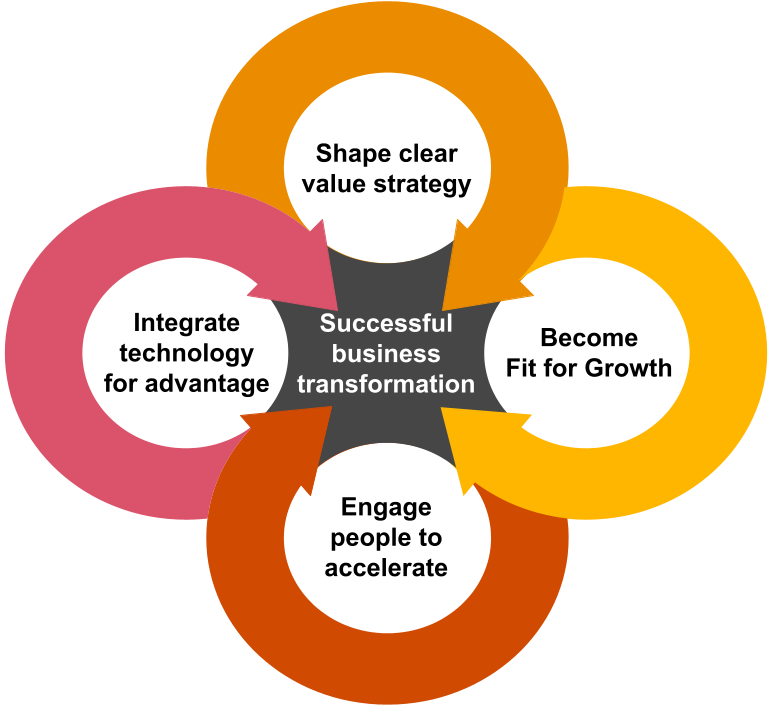
Credit: www.pwc.com
Adapting To The Future Of Banking
The banking landscape is rapidly transforming, driven by technological advancements and evolving customer expectations. Modern businesses must stay ahead of trends to remain competitive and secure their position in the future of banking. In this dedicated segment, we explore transformative strategies within the financial sector with particular emphasis on Artificial Intelligence, blockchain technology, sustainability, and scenario planning.
Preparing For The Impact Of Ai And Machine Learning
Artificial Intelligence (AI) and Machine Learning (ML) are revolutionizing the banking industry. By analyzing vast amounts of data, these technologies can aid in risk assessment, personalize banking services, and enhance customer experience. To stay ahead, banks must:
- Invest in AI-driven analytics to understand customer behavior patterns
- Automate routine tasks to improve efficiency and accuracy
- Enhance security measures by employing sophisticated AI algorithms
Embracing AI and ML is not just beneficial but crucial for banks to optimize operations and innovate services .
The Role Of Blockchain In Tomorrow’s Banking Industry
Blockchain is poised to reshape banking, offering unparalleled security, transparency, and efficiency. This technology’s decentralized nature can transform payments, settlements, and even regulatory compliance. Key steps for incorporating blockchain include:
- Understanding blockchain fundamentals and their potential applications
- Developing strategies to incorporate cryptocurrencies and digital assets
- Collaborating with fintech firms to create innovative blockchain solutions
Integrating blockchain technology is essential to build trust and streamline operations within the banking sector.
The Shift Towards Sustainable And Green Banking
The demand for environmentally friendly practices is ushering in an era of sustainable and green banking. This involves:
| Strategy | Benefit |
|---|---|
| Enhanced corporate responsibility perception | |
| Support for sustainable projects | |
| Attraction of environmentally-conscious clients |
Implementing green banking practices not only supports the environment but also aligns with changing consumer values .
Scenario Planning And Future-proofing Your Business
As the finance industry evolves, it’s vital to anticipate and prepare for future developments. Scenario planning involves:
- Identifying potential industry shifts and outlining impactful scenarios
- Developing adaptive business models to withstand unforeseen changes
- Ensuring agility and flexibility in strategic decision-making
Through careful planning and adaptive strategies, banks can secure resilience in the face of an unpredictable financial landscape.
Conclusion: Crafting A Resilient Bank Business Plan
A resilient bank business plan is an indispensable roadmap to navigate the choppy waters of today’s financial industry. It demands a strategic blend of established banking traditions and innovative approaches, with a clear vision to steer through market uncertainties. This section delineates key strategies and insights for banks intent on crafting a business plan that withstands the test of time and turbulence.
Balancing Tradition With Innovation
The financial world is a complex tapestry, interwoven with time-honored practices and cutting-edge technologies. A stellar business plan strikes a balance, respecting traditional banking values while embracing innovation. Trust and reliability remain paramount, but integrating digital banking solutions like blockchain technology and AI can catapult service efficiency and customer satisfaction to new heights.
Key Takeaways For A Transformative Bank Business Strategy
- Customer-Centric Products: Design services that meet the evolving needs of today’s consumers.
- Adaptability: Foster agility in operations to rapidly respond to industry changes.
- Compliance Awareness: Stay ahead with proactive regulatory compliance and risk management.
- Data-Driven Decisions: Employ analytics to shape strategic choices and personalize customer interactions.
- Sustainable Practices: Commit to social responsibility and sustainable banking to enhance brand integrity.
Navigating Uncertainty With A Robust Business Plan
Future-proofing your bank’s business plan involves preparing for the unknown. A robust plan not only adapts to current trends but also anticipates potential shifts in the economic landscape. It should incorporate scenario planning to ensure resilience against a range of possible futures, safeguarding your institution’s longevity and prosperity.
Building on actionable insights and in-depth market analysis, a robust business plan enables your bank to remain competitive and relevant. It necessitates ongoing fine-tuning, leveraging emerging technologies, and upholding an unwavering commitment to customer service excellence. This proactive approach defines the bedrock for lasting success in the banking sector.
Frequently Asked Questions
How can banks transform for a new generation of customers.
Banks can adapt to new customer generations by embracing digital innovation, offering mobile-friendly services, personalizing interactions, and prioritizing financial education. They should also invest in user experience and engage with customers on social media platforms.
What Are The Growth Strategies For Banks?
Banks can pursue growth by diversifying services, investing in technology, targeting new customer segments, cross-selling products, and expanding into new markets. Robust risk management and partnership with fintech companies also drive growth.
Which Strategy Is Used By Banks To Attract More Customers In Their Business?
Banks often use personalized service offerings, competitive interest rates, and loyalty rewards programs to attract new customers. They also provide convenient digital banking solutions and promotional deals on services and products.
What Should Bank Focus On Transformation?
Banks should prioritize digital transformation, enhance customer experience, adopt advanced analytics, ensure cybersecurity, and streamline regulatory compliance.
Crafting a bank business plan infused with transformative strategies is vital. It catapults modern financial ventures into future successes. As you integrate these innovative approaches, anticipate a competitive edge and growth. Take action now; secure your bank’s position in the ever-evolving financial landscape for thriving outcomes.

Solar Energy Financial Model
The Solar Energy Financial Model Spreadsheet Template in Excel assists you in preparing a sophisticated financial forecast for a utility-scale solar p... read more
- PREMIUM – $149.95 Version 7.1
- PRO – $129.95 Version 7.1
- BASIC – $99.95 Version 7.1
- PDF Demos – $0.00 Version 7.1

Financial Model for Mobile App | Mobile App Business Plan
The Mobile App Financial Plan Template in Excel allows you to develop financial projections when launching a new business centered around an app insta... read more
- PREMIUM – $209.95 Version 7.3
- PRO – $159.95 Version 7.3
- BASIC – $109.95 Version 7.3
- PDF Demo Versions – $0.00 Version 7.3

Private Equity Fund Model (Investor Cashflows)
Private Equity Financial Model to analyze fund cashflows and returns available to Limited Partners (Investors) and General Partner (Investment Manager... read more
- PDF Demo version – $0.00 Version 1
- American Waterfall – $155.00 Version 2
- European Waterfall – $115.00 Version 2

Hotel Investment Financial Model
The Hotel Investment Financial Model provides a framework to forecast the expected cash flows for a hotel investment and calculates the relevant inves... read more
- FULL Version (Excel) – $34.95
- FREE Version (PDF) – $0.00

Coffee Shop Financial Model Excel Template
Download Coffee Shop Financial Model Template. Allows you to start planning with no fuss and maximum of help Highly versatile and user-fri... read more
- Excel - Multi-User – $129.00 Version 1
- Excel - Single-User – $99.00 Version 1
- Free Demo – $0.00 Version 1

Pharma Biotech Valuation Model Template (Risk-Adjusted)
The Pharma Biotech Valuation Model Template calculates the risk-adjusted DCF Value of a Pharma or Biotech Startup Company with several products under ... read more
- Full Excel Model - PREMIUM – $199.95 Version 2.2
- Full Excel Model - BASIC – $149.95 Version 2.2
- PDF Demo Previews – $0.00 Version 2.2

SaaS Business Financial Model
The SaaS Business financial model offers valuable assistance in preparing a budget and multi-year financial plan for a Software as a Service (SaaS) bu... read more
- Premium Excel Model – $199.95 Version 8.1
- Pro Excel Model – $149.95 Version 8.1
- Basic Excel Model – $99.95 Version 8.1
- PDF Demo – $0.00 Version 8.1

Discounted Cash Flow Valuation Model: Free Excel Template
This Discounted Cash Flow (DCF) valuation calculator template projects a three-statement model that allows users to value a company based on the net p... read more
- Basic Version – $0.00 Version 4.4
- Advance Version – $0.00 Version 4.4

Google Sheets Project Plan Template
This Project Plan Template in Google Sheet allows you to quickly develop a project plan and plot a Gantt chart. Enjoy all the benefits of Google Docs ... read more

Commercial Real Estate Valuation Model Template
A commercial real estate valuation model template assists in running a professional DCF Valuation for a commercial property such as an office building... read more
- PDF Demo Versions – $0.00 Version 1
- BASIC Excel Model Template – $59.00 Version 1
- PRO Excel Model Template – $99.00 Version 1
- PREMIUM Excel MODEL + Report Template – $199.00 Version 1

Upstream Oil & Gas Project Analysis
The Upstream Oil & Gas Project Financial Model Template in Excel empowers you to project and dissect your impending Oil and Gas drilling ventures. Pre... read more
- Pro - Full Excel Model – $159.95 Version 8.3
- Basic - Full Excel Model – $119.95 Version 8.3
- PDF Demo Versions – $0.00 Version 8.3

Private School Financial Model
This is a financial model template for a new private school startup business. The Excel model allows forecasting the cash flows over the next 10 years... read more
- Excel Model – $44.95 Version 9.1
- PDF Demo – $0.00 Version 9.0

Hotel Financial Model Excel Template
Download Hotel Financial Model. Creates a financial summary formatted for your Pitch Deck. Ready to Raise Capital. The hotel excel financial... read more

Wind Energy Farm Financial Model
The Wind Energy Financial Model forecasts the expected financials for a Wind Park project and calculates the project's IRR and NPV.
- PDF Demo - Basic – $0.00 Version 3
- PDF Demo - Pro – $0.00 Version 3
- Full Excel Model - Basic – $64.95 Version 3
- Full Excel Model - Pro – $79.95 Version 3

Manufacturing Company Financial Model
The Manufacturing Financial Model provides a framework to accurately forecast the financial statements of a manufacturing company over the next 10 yea... read more
- Excel Model – $44.95 Version 4
- PDF Demo – $0.00 Version 4

Three Statement Model
The three statement model provides a simple template in Excel to forecast the three financial statements over the next 5 years: Income Statement, Bala... read more

Grocery Store Financial Model Excel Template
Try Grocery Store Financial Projection. Creates 5-year Pro-forma financial statements, and financial ratios in GAAP or IFRS formats on the f... read more

Waterfall Profit Distribution Model (up to 4 Tiers)
We are introducing our 4-Tier Waterfall Profit Distribution Model. The waterfall profit distribution model template aims to support a thorough analysi... read more
- Full Excel Model – $79.95 Version 2.1
- PDF Demo – $0.00 Version 2.1

Advanced Financial Model with DCF & Valuation
Dynamic Financial Planning & Analysis Model providing up to 10 Years of Financial Projections.
- Excel Financial Model – $129.00 Version 1
- PDF Free Demo – $0.00 Version 1

Gasoline and EV Charging Station Financial Model
Investors can assess the viability of setting up and investing in gasoline stations with a charging station by downloading a financial model for their... read more
- Premium Excel Version – $129.95 Version 2.1
- Basic Excel Version – $99.95 Version 2.1
- PDF Versions – $0.00 Version 2.1

Airbnb Financial Model
Air BnB Financial Model Template presents the business case of the purchase of up to 5 properties with the intent of utilizing them as short term rent... read more
- Excel Model – $119.00 Version 1
- Free PDF – $0.00 Version 1

Simple Cap Table Template – Free Download
This is a simple capitalization (cap) table template which allows entrepreneurs to understand the dilution effect of capital raisings and a simple sto... read more

Fitness Center 10 Year Financial Model
Key logic designed to forecast cash flow up to 10 years for a fitness center that has recurring monthly fees. Fully integrated 3-statement model, cap ... read more

Outpatient Clinic Financial Model Excel Template
Shop Outpatient Clinic Financial Model Template. Enhance your pitches and impress potential investors with the expected financial metrics. A sop... read more
- Excel - Multi-User – $129.00
- Excel - Single-User – $99.00
- Free Demo – $0.00
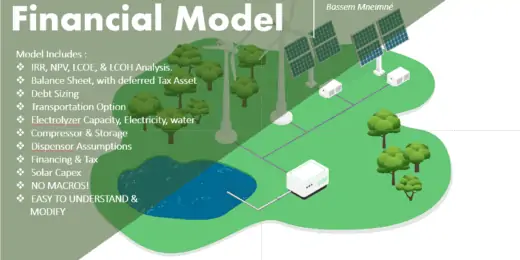
Green Hydrogen (Simple Electrolysis Financial Model)
The Model Incorporates data provided by different available sources to Model an Electrolysis financial model. It includes Electrolyzer cost, Dispenser... read more
- Excel Template – $150.00 Version 1
- Free Version – $0.00 Version 1

Lending Platform Financial Model (LaaS)
Includes all the assumptions you need to project the gross revenues and profits of a LaaS platform (Lending as a Service). 3-statement model and cap t... read more
- Excel Model – $75.00 Version 3

Gold Mine Investment Model
The Gold Mine Investment Model is used to determine the financial feasibility of a proposed Gold Mine Investment. The Financial Model outputs IRR and ... read more
- Excel Financial Model – $44.95 Version 6.2
- PDF Demo – $0.00 Version 6.2

Beverage Manufacturing Start-up Financial Model
The beverage manufacturing industry is a dynamic and rapidly growing sector that caters to a diverse market ranging from soft drinks and juices to alc... read more
- Excel Model – $199.95 Version 5.2
- PDF Demo – $0.00 Version 5.2

Bakery Financial Model Excel Template
Shop Bakery Budget Template. Solid package of print-ready reports, including P&L and cash flow statements, and a complete set of financial r... read more

Cafe Financial Model Excel Template
Check Our Cafe Budget Template. Creates a financial summary formatted for your Pitch Deck. Ready to Raise Capital. Creates 5-year cafe financial model... read more

Authority Matrix Template
Authorities and Responsibilities Matrices are considered important to organizations due to their role in identifying and documenting decisions that ar... read more
- Excel Version – $35.00
- PPT Version – $0.00

Airport Operator Financial Model
Airport Operator Financial Model presents the business case of an already operating airport (with planned refurbishments) and an investment in a new t... read more
- Excel Model – $119.00
- Free PDF – $0.00

Due Diligence P&L – Exhaustive Revenue and Costs Analysis Template
Model for in depth understanding of high level profit and loss and revenue analysis. Big-4 like checklist of due diligence analyses. This Financial Du... read more

Biogas Financial Model
The Biogas Financial Model forecasts the expected financials for a Biogas plant project and calculates the IRR and NPV values for the project.
- FREE PDF – $0.00 Version 1
- Excel Model – $39.95 Version 2

Online Clothing Store Financial Model Excel Template
Impress bankers and investors with a proven, solid Online Clothing Store Financial Projection Template. Five year online clothing store cash... read more

Poultry Farm Financial Model Excel Template
Shop Poultry Farm Budget Template. Excel template - robust and powerful. This is your solid foundation to plan your business model. Five-year ho... read more

Rental Property Financial Model
The rental property financial model calculates the homeowner's IRR and long it takes to repay a mortgage when the property is rented. The financial... read more

Startup Company Financial Model – 5 Year Financial Forecast
Highly-sophisticated and user-friendly financial model for Startup Companies providing a 5-Year advanced financial forecast.
- Financial Model - Light Version – $119.00 Version 1
- Financial Model - Standard Version – $159.00 Version 1
- Financial Model - Premium Version – $219.00 Version 1

Hair Salon Financial Plan | Beauty Salon Business Plan
Plan out the financial plan your hair or beauty salon. The beauty & hair salon business plan goes up to 10 years and has plenty of granularity.

Clothing Store Financial Model Excel Template
Get Your Clothing Store Budget Template. Creates 5-year Pro-forma financial statements, and financial ratios in GAAP or IFRS formats on the fly. Five-... read more

Green Hydrogen (Electrolysis) Production Financial Model
This green hydrogen financial model template builds a multi-year financial plan to analyze the financial feasibility and profitability for the product... read more
- Full Excel Version – $119.00 Version 1.7
- PDF Version – $0.00 Version 1.7

Financial model for FMCG
The FMCG Financial Model provides a framework to accurately forecast the financial statements of a FMCG company over the next 8 years. The model uses ... read more
- PDF Demo Version – $0.00
- Excel Model – $25.00

Start Up Car Park Excel Model and Valuation
This detailed, yet easy to use three statement financial model will allow you to calculate your business' profit and loss, build a balance sheet and c... read more
- Paid Excel Model – $69.00

IRR Project Finance Analysis
The IRR Project Finance Analysis forecasts the expected financials for a greenfield project and calculates the levered and unlevered Internal Rate of ... read more

Hotel Valuation Financial Model
The Hotel Valuation Financial Model provides a simple way to forecast the expected cash flows for a hotel investment and calculates the relevant inves... read more
- Excel Model – $44.95 Version 6.1
- PDF Demo – $0.00 Version 6.1

NPV, IRR, & Payback Calculator
The template allows the user to calculate the net present value (NPV), internal rate of return (IRR) and payback period from simple cash flow stream w... read more
- 5 Yr Excel Version – $0.00 Version 1
- 10 Yr Excel Version – $0.00 Version 1

Consolidated Financial Statements
The purpose of this model is to provide a simple way to see the financial statements for many companies in i file
- Excel Version – $30.00 Version 2
- Free Version – $0.00 Version 2

Dental Practice Financial Model Excel Template
Check Dental Practice Financial Model. Fortunately, you can solve Cash Flow shortfalls with a bit of effort. A sophisticated 5 year dental p... read more

Waste to Energy Financial Model
The purpose of this financial model is to evaluate the financial feasibility of a waste to energy project such as e.g. a landfill gas plant. The model... read more
- Excel FULL Version – $35.00
- PDF Version – $0.00

Real Estate Developer Model
This financial model can be used to evaluate the financial feasibility of a real estate development project and present it in investor grade quality t... read more
- Excel Model – $49.95 Version 1.1
- PDF Demo Version – $0.00 Version 1.1

Hospital Financial Model
Simply open the file in Excel
- Full Version – $34.95
- Free Version – $0.00

Mixed-Use Real Estate Model: Leverage / JV Options
A general real estate model to plan all assumptions for up to 7 'uses' for a given property. Includes development / acquisition, leverage if desired, ... read more
- EURO Currency Version – $75.00 Version 1
- Unit-based Version – $75.00 Version 4
- Square Foot-based Version – $75.00 Version 4

Simple Fundraising Model
This is a simple fundraising financial model template in Excel. Enter your business plan, calculate the amount of funding required and allocate the eq... read more

Real Estate Financial Model Templates Package
This is a collection of ready-made Excel financial model templates for real estate businesses and its related sectors.
- Real Estate Package – $282.30 Version 1

Poultry Project Financial Feasibility Model
This poultry financial model template in Excel provides a framework to determine the financial feasibility of a new poultry project for producing bro... read more
- Pro Excel Version – $99.95 Version 1
- Basic Excel Version – $79.95 Version 1
- PDF Demo Version – $0.00 Version 1

10 Year P&L, Balance Sheet, Cash Flow, and Break-even Analysis
This excel template is great for those wanting a professional-looking forecast 10 years of financial statements, those starting out as an entrepreneur... read more
- PDF Demo – $0.00
- Excel Model – $20.00

Financial Dashboard Excel Template
Set your KPI objectives and your month to month financial results and Financial Dashboard Excel Template will take care of creating the beautiful Grap... read more
- Full Excel – $29.00

Budget to Actual Comparison
This monthly budget-to-actual dashboard allows for at-a-glance performance analysis. In addition to analyzing YTD performance, it also provides a revi... read more
- Excel Model – $115.00 Version 1

Residual Land Value Calculation
The Residual Land Value Calculation model allows you to determine the value of a piece of land from a developer's point of view by analyzing how much ... read more
- Yearly Model PDF Demo – $0.00 Version 4.1
- Monthly Model PDF Demo – $0.00 Version 4.1
- Monthly Model Excel Version – $69.90 Version 4.1
- Yearly Model Excel Version – $35.00 Version 4.1

Spa Financial Model Excel Template
Download Spa Financial Projection Template. This well-tested, robust, and powerful template is your solid foundation to plan a success. Creates ... read more

Digital Marketing Agency Financial Model Excel Template
Check Our Digital Marketing Agency Financial Projection Template. Excel Template for your pitch deck to convince Investors. Digital Marketing Ag... read more

Start Up Solar Farm Excel Model and Valuation
Start Up Solar Farm Excel Model presents the business case of an investment in the construction of a solar farm and the sale of the energy generated f... read more

Construction / Development Financial Model
Development & Construction Model presents the case where a property with multiple residential units is constructed and subsequently rented for sev... read more
- Full Excel Model – $119.00
- Free Demo PDF – $0.00

Nail Salon Financial Model Excel Template
Check Nail Salon Financial Model Template. Excel - well-tested, robust and powerful. Get you solid foundation to plan your business model. Five-year f... read more

Boutique Hotel Financial Model Excel Template
Check Our Boutique Hotel Financial Projection. Excel - well-tested, robust, and powerful. Get you a solid foundation to plan your business m... read more

Fintech Financial Model Excel Template
Try Fintech Financial Projection Template. Enhance your pitch decks and impress potential investors with a proven, strategy template. Five ... read more
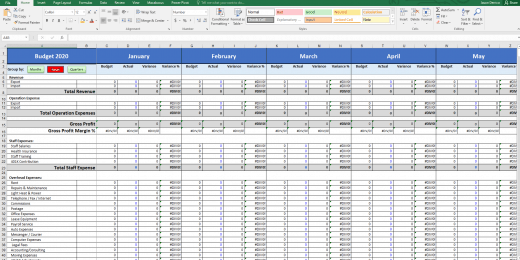
Budget vs. Actual (Logistic Company)
The Budget vs. Actual financial model is used to measure actual results against the budget projected for the financial period.
- PDF File – $0.00
- Full Version – $55.00

Professional Financial Modeling Services – Profit Vision
Professional Financial Modeling - Tailor Made Services and assistance for your business needs.
- Hourly Rate – $100.00 Version 1 x
- Daily Rate – $800.00 Version 1 x

Multiple Loan Repayment Planning with Extra Principal Applied
Optimize where an extra principal payment should go and see the total cash flow savings when you have multiple loans.

Restaurant Financial Model Excel Template
Get Your Restaurant Financial Model Template. Spend less time on Cash Flow forecasting and more time on your products. Restaurant Financial ... read more


Profit and Loss Statement Actual vs Budget & Previous Year
This model is profit and loss statement for general trading including comparison for the current month, year to date and full year
- Paid Excel Version – $25.00
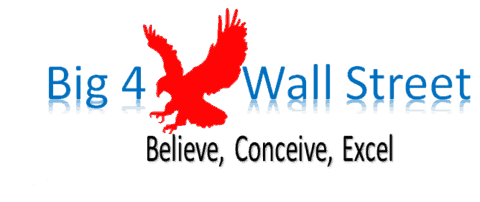
Custom Financial Modeling Services / Assistance
Offering you with Custom financial modeling services or assistance by an experienced financial modeling team called Big4WallStreet.
- 1 Hour – $90.00 x
- 4 Hours – $360.00 x
- 8 Hours – $720.00 x

Travel Agency Financial Model Excel Template
Shop Travel Agency Financial Projection Template. This well-tested, robust, and powerful template is your solid foundation to plan a success. A ... read more

Insurance Agency Financial Model Excel Template
Shop Insurance Agency Financial Plan. Fortunately, you can solve Cash Flow shortfalls with a bit of effort. Generates 5-year insurance agency ex... read more

Car Rental Financial Model Excel Template
Order Car Rental Pro-forma Template. Simple-to-use yet very sophisticated planning tool. Get reliable results with minimal experience. Five-year car ... read more
- Excel - Multi-User – $129.00 Version 1.1
- Excel - Single-User – $99.00 Version 1.1
- Free Demo – $0.00 Version 1.0

Commercial Bank Financial Model
Commercial Banking Financial Model presents the case of a commercial bank with regulatory thresholds based on Basel 3. The model generates the three f... read more
- Excel Model – $220.00

Real Estate Brokerage Firm Financial Model Template
Financial model template for a high-level real estate brokerage firm that facilitates the buying and selling of real estate properties between buyers ... read more
- Real Estate Financial Model - Full Version – $44.95
- Real Estate Financial Model - PDF Demo – $0.00

Beauty Salon Financial Model Excel Template
Get Your Beauty Salon Financial Model Template. Creates 5-year financial projection and financial ratios in GAAP or IFRS formats on the fly. Creates 5... read more

Equipment Rental Cash Flow Model
Highly dynamic financial model that is specific to renting equipment out. High attention paid to the cash flows and timeliness of them so the user has... read more
- Version 2 – $75.00
- 10-Year Model – $75.00

DCF Valuation Model Restaurant
The DCF Valuation Model for Restaurants provides a business plan in the form of an Excel Template to value a restaurant based on the Discounted Cash F... read more
- Full Version – $34.95 Version 3
- Lite Version – $0.00 Version 3
- PDF Demo – $0.00 Version 3

Inventory Dashboard Model Template
!! Kindly use the latest Microsoft Excel Version before purchasing the model, otherwise, the dynamic dashboard will NOT work.!! Inventory Dashboard Mo... read more
- Free PDF Demo – $0.00

Payroll Budget Plan Excel Template
A professional template to budget payroll expenses
- Excel Template + PDF Guide – $20.00

Infrastructure Private Equity Wind Energy Modeling Test Solution (Associate level)
A self-made Modeling Test with a solution for Onshore Wind Turbines plant. The case study is in Chile assuming a 376 MW Capacity. The download include... read more
- Free Version PDF – $0.00
- Free Version PPT – $0.00
- Excel Model – $30.00

Open Pit Mine Financial Model
Allow a potential miner to see visually and numerically (annual basis) what their possible financial position would look like when starting up an open... read more
- Excel Model – $45.00 Version 4

Medical Practice Financial Model Excel Template
Check Our Medical Practice Financial Projection. Simple-to-use yet very sophisticated planning tool. Get reliable results with minimal exper... read more

Solar Panel Manufacturing Plant Business Plan Financial Model Excel Template
Get the Best Solar Panel Manufacturing Plant Financial Model. Spend less time on Cash Flow forecasting and more time on your products. The Solar Panel... read more

Mergers & Acquisitions (M&A) Model
The Mergers & Acquisition (M&A) Model provides a projection for a company looking to potentially merge or acquire another company. This model runs... read more
- Full Excel Version – $75.00 Version 1

Pizzeria Financial Model Excel Template
Get Your Pizzeria Budget Template. Excel template - robust and powerful. This is your solid foundation to plan your business model. Five-year horizon ... read more

Coffee Farm Financial Feasibility Model Template
This coffee farm financial feasibility model template prepares a financial plan for your next coffee growing project! Figure out the expected incomes ... read more
- Standard version – $89.00 Version 1.2
- Pro version – $119.00 Version 1.2
- Free Demo PDFs – $0.00 Version 1.2

Resort Financial Model Excel Template
Order Resort Financial Model. Excel template - robust and powerful. This is your solid foundation to plan your business model. Five year res... read more
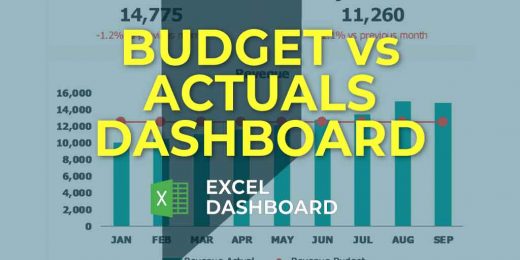
Budget vs Actual Excel Template
Create your very own budget vs actual analysis by trying out this Budget vs Actual Analysis Excel Template.

Airline Operator Financial Model
Airline Operator Financial Model presents the case of a company operating an airline business. The model generates the three financial statements, a s... read more

Generic Cost Benefit Analysis Excel Model
User-friendly Excel model intended for the preparation of a Cost-Benefit Analysis to determine the financial viability for a proposed project or inves... read more
- PDF Copy – $0.00
- Excel Model – $35.00

Golf Course Financial Model – Startup
A 5-year financial model tailored to starting a golf course and projecting financial performance for its business plan. Includes financial statements.

Renewable Energy Financial Model Bundle
This is a collection of financial model templates for projects or ventures in the Renewable Energy Industry and its related sectors. The total value ... read more
- Template Bundle – $561.93 Version 2
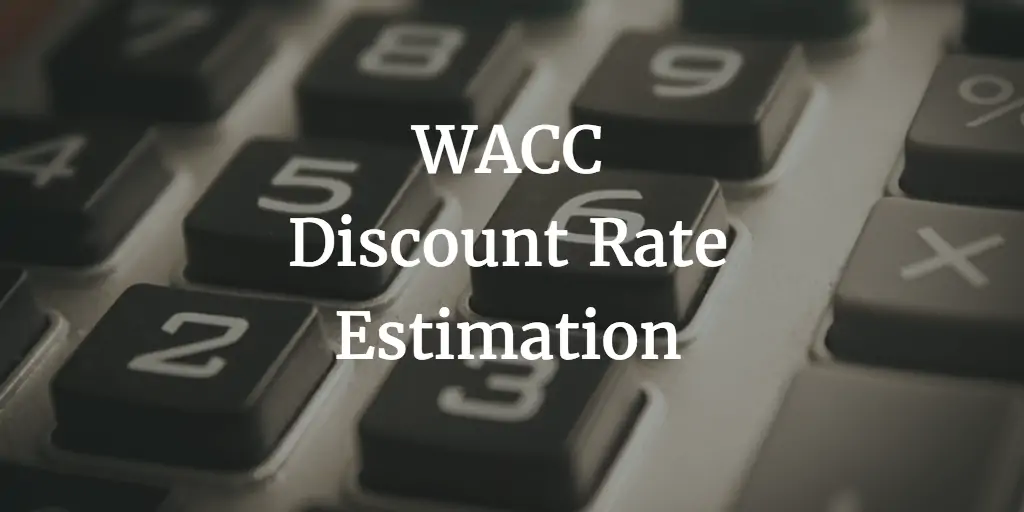
WACC Calculator | Discount Rate Estimation
Unlock the power of informed financial decision-making with our WACC Calculator! Dive into accurate discount rate estimations and empower your busines... read more

Real Estate Financial Model Bundle
This is a collection of financial model templates that provides the financial projections and valuations for Real Estate businesses and its related se... read more
- Template Bundle – $299.00 Version 1

Cannabis Financial Model Excel Template
Download Cannabis Farming Financial Model. Creates 5-year financial projection and financial ratios in GAAP or IFRS formats on the fly. Cann... read more

Mergers and Acquisition (M&A) Financial Model
Merger and Acquisition Model template consists of an excel model which assists the user to assess the financial viability of the resulting proforma me... read more

Generic Startup/Existing Business 5-year (Monthly) Financial Projection 3 Statement Excel Model
Highly versatile and user-friendly Excel model for the preparation a of 5-year rolling 3 statement (Income Statement, Balance Sheet and Cash flow Stat... read more
- Excel Model – $59.00 Version 1
- PDF Model – $0.00 Version 1

Payable and Receivable Tracking (Google Sheets)
This is a Google Sheets version of the financial model template for tracking accounts payable and accounts receivable
- Google Sheet Version – $45.00
- Excel Version – $45.00

Real Estate Portfolio Financial Model
The Real Estate Portfolio Financial Model Template forecasts the financial performance when building a real estate portfolio. The model allows simulat... read more
- Full Excel Version – $199.95 Version 2.7
- PDF Demo Version – $0.00 Version 2.7

Insurance Pricing Model
Ever wondered how much you need to charge in order to offer insurance on a given product or service? You will know how much after using this tool.
- Full Model – $45.00 Version 1

Skin Care Financial Model Excel Template
Order Skin Care Pro-forma Template. Generate fully-integrated Pro-forma for 5 years. Automatic aggregation of annual summaries on outputs tabs. Create... read more
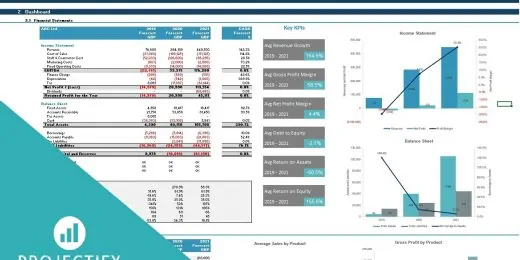
Generic Startup Financial Projection 3 statement Excel Model
User-friendly Excel model intended for the preparation of a 3 statement (Income Statement, Balance Sheet and Cashflow Statement) financial projection ... read more
- Full Excel Model – $45.00

Bar Financial Model Excel Template
Try Bar Financial Plan. Requesting a loan without a financial model for paying it back is a common way to land in the rejection pile. Creates 5-... read more

Barber Shop Financial Model Excel Template
Check Barber Shop Financial Projection Template. Creates 5-year financial projection and financial ratios in GAAP or IFRS formats on the fly. Generate... read more

Flower Shop Financial Model Excel Template
Discover Flower Shop Financial Model Template. Allows investors and business owners to make a complete financial projection in less than 90 mins... read more

Manufacturing Startup Feasibility Model
Launching a manufacturing startup can be complex, and securing financing requires a solid financial plan. Our Manufacturing Startup Financial Feasibil... read more
- PREMIUM Excel Version – $129.95 Version 2.41
- BASIC Excel Version – $89.95 Version 2.41
- PDF DEMO Versions – $0.00 Version 2.41

Shopping Mall Financial Model
Shopping Mall Financial Model presents the case of an investment into a shopping mall and its operation. The model generates the three financial state... read more

IPO Valuation Model
This financial model can be used to value any Initial Public Offering (IPO) using Option Value, DCF and Relative Valuation.

Laundry Financial Model Excel Template
Purchase Laundry Pro Forma Projection. Impress bankers and investors with a proven, strategic business plan that impresses every time. Five-year finan... read more

Price Volume Mix Charts and Analysis – On revenue and Gross Profit by Product
Best practice model for a complete Price Volume Mix (PVM) analysis on revenue and on gross profit by product.

Leveraged Buyout (LBO) Model
Leveraged Buy Out (LBO) Model presents the business case of the purchase of a company by using a high level of debt financing. The model generates the... read more
- Paid Excel Model – $119.00
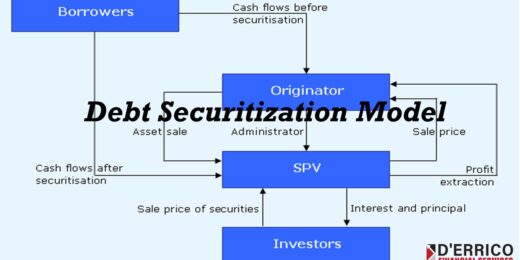
Debt Securitization Model
The Debt Securitization is the process of packaging debt into a Securitization Vehicle sold to a Fiduciary where it is converted into bonds sold to in... read more
- Free PDF Preview – $0.00
- Full Excel Model – $65.00

Clinic Financial Model Excel Template
Shop Clinic Financial Plan. Create fully-integrated financial projection for 5 years. With 3 way financial statements inside. Five year clin... read more

Food Truck Financial Model Excel Template
Purchase Food Truck Financial Projection Template. Excel Template for your pitch deck to convince Investors. The food truck budget financial model is ... read more

Steel Industry Financial Model
Steel Industry Financial Model presents the business case of the operation of a steel plant using the mini mill technology. The model generates the th... read more

Top 16 Google Sheet Templates
This is a bundle of all the most useful and efficient google sheet templates I have built over the years. Includes everything from budgeting and crew ... read more

Mini Storage Business Plan Template
We understand that your storage needs are unique, so we've created a comprehensive mini-storage business plan that will help you chart your course to ... read more
- Full Excel Version – $44.95 Version 9.2
- PDF Demo Version – $0.00 Version 9.2

Full Service Hospital Financial Model
This financial model attempts to give the user a full scope of starting a 250 bed (adjustable) hospital. It will allow for all revenue and cost assump... read more
- Full Model – $45.00 Version 1.2

Clinical Lab Financial Model Excel Template
Order Clinical Lab Financial Projection Template. This well-tested, robust, and powerful template is your solid foundation to plan a success... read more

Monte Carlo Simulation in Excel
The model presents an example of a Monte Carlo Simulation using excel to estimate the Net Present Value of an investment.
- Monte Carlo in Excel – $0.00 Version 1

Industry Based Financial Models (Variety Bundle)
There are currently 52 unique financial models included in this bundle. Nearly all of that include a fully integrated three statement model and all of... read more

Jewelry Shop / Store 5 Year Startup Business Model
A bottom-up financial model that is designed specifically for a jewelry store, but could easily be used for any retail business startup. Includes 3-st... read more

E-Commerce 3 Statement Financial Projection Model with Valuation
Highly versatile and user-friendly Excel model for the preparation of a rolling 3 statement (Income Statement, Balance Sheet and Cash flow Statement) ... read more
- Excel Model Populated – $59.00
- Excel Model Not Populated – $59.00

Physiotherapy Financial Model Excel Template
Impress bankers and investors with a proven, solid Physiotherapy Financial Plan. Five-year physiotherapy budget financial model for startups and... read more

Fish Farm Financial Model Excel Template
Get the Best Fish Farm Pro Forma Projection. This well-tested, robust, and powerful template is your solid foundation to plan a success. Highly ... read more

Law Firm Financial Model Excel Template
Try Law Firm Financial Model Template. Allows you to start planning with no fuss and maximum of help Five-year financial model template for Exce... read more

Chicken Egg Farm – Business Plan
This chicken egg farming model aims to plan the operations, financial feasibility, and profitability of a new poultry egg farming business. This Start... read more
- Excel Version – $99.95 Version 1.3
- PDF Demo Version – $0.00 Version 1.3

Accounting Financial Model Bundle
Simply open the files using MS Excel
- Template Bundle – $249.00 Version 1

E-com Simple Financial Model Excel Template
Get Your Simple E-Commerce Pro Forma Projection. There's power in Cash Flow Projections and the insight they can provide your business. Five-year simp... read more

Cattle Farming Financial Model Excel Template
Impress bankers and investors with a proven, solid Cattle Farming Financial Projection. Cattle Farming Five Year Financial Projection Template f... read more

Casino Hotel Financial Model Excel Template
Download Casino Hotel Financial Projection Template. Fortunately, you can solve Cash Flow shortfalls with a bit of effort. Casino Hotel Budget Financi... read more

Online Car Rental – 3 Statement Financial Model with 5 years Monthly Projection
Online Car Rental Platform Business Plan Model is a perfect tool for a feasibility study on launching an online car rental business.

Electric Vehicle (EV) Charging Station Financial Model – 5 Year Monthly Projection
Electric Vehicle (EV) charging Station FM helps user asses financial viability of setting up and operating a charging station.

Poultry Farm Valuation Model
The Poultry Farm Valuation Model allows forecasting the financial statements for a poultry farm based on operational metrics such as the hatchery rati... read more
- Free PDF Demo – $0.00 Version 4.1
- Full Excel Model – $44.95 Version 4.1

Juice Bar Financial Model Excel Template
Get Your Juice Bar Financial Model. Impress bankers and investors with a proven, strategic business plan that impresses every time. Five year juice ba... read more

Freight Brokerage Financial Model Excel Template
Discover Freight Brokerage Pro Forma Projection. Impress bankers and investors with a proven, strategic business plan that impresses every time.... read more

Catering Financial Model Excel Template
Check Our Catering Pro-forma Template. Excel template - robust and powerful. This is your solid foundation to plan your business model. Highly versati... read more

Cash Flow Dashboard Spreadsheet
The Cash Management Dashboard lets you rapidly determine areas where your company is exceeding expectations and those that require immediate touch. An... read more

Vegetable Farming Financial Model Excel Template
Buy Vegetables Farming Pro-forma Template. Solid package of print-ready reports: P&L and Cash Flow statement, and a complete set of ratios. ... read more

Waterfall Model for Joint Venture Real Estate Project
Dynamic financial model for calculating cash splits to sponsors/investors based on various IRR hurdles getting reached.
- Version 1 – $45.00 Version 1
- Version 2 – $45.00 Version 2
- Version 3 (5 scenarios) – $45.00 Version 3

Digital Product Marketplace Model
The digital product marketplace model prepares a financial plan in Excel for online marketplace Startup businesses similar to concepts such as Themefo... read more
- Free PDF Demo Versons – $0.00 Version 1.1
- Basic Excel Model Version (5Y) – $59.00 Version 1.1
- Pro Excel Model Version (5Y) – $79.00 Version 1.1
- Premium Excel Model Version (10Y) – $99.00 Version 1.1

Bed And Breakfast Financial Model Excel Template
Buy Bed And Breakfast Financial Projection Template. This well-tested, robust, and powerful template is your solid foundation to plan a success.... read more

Serviced Office Financial Model
The financial model provides an excel template for a multi-year financial plan, DCF valuation and IRR analysis for a serviced office operator or co-w... read more
- Full Excel Version – $44.95

Clothing Manufacturing Business Plan Financial Model Excel Template
Shop Clothing Manufacturing Financial Model. There's power in Cash Flow Projections and the insight they can provide your business. Five-year Clothing... read more

Hair and Beauty Salon Business Plan – 5Yr Financial Projection Model
Highly-sophisticated and user-friendly Hair and Beauty Salon financial model providing advanced financial projection for a 5-Year Business Plan.
- Excel Model - Standard Version – $79.00
- Excel Model - Premium Version – $109.00
- PDF Free Demo – $0.00

Business Plan for a Biodiesel Manufacturing Plant
Setting up a biodiesel manufacturing plant requires a comprehensive and executed business strategy. To assess biodiesel production's financial sustain... read more
- Premium Excel File – $119.95 Version 2.1
- Basic Excel File – $99.95 Version 2.1
- PDF Demo Version – $0.00 Version 2.1
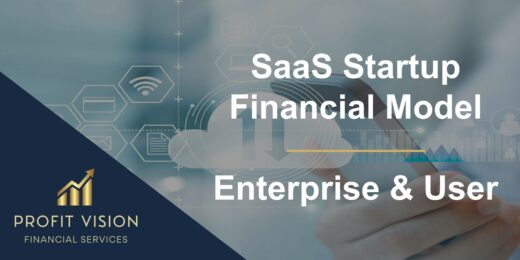
SaaS Startup Financial Model – Enterprise and User
Advanced Financial Model providing a dynamic up to 10-year financial forecast for a Software as a Service (SaaS) startup business.
- Excel Financial Model - Standard Version – $99.00 Version 2
- Excel Financial Model - Premium Version – $149.00 Version 2
- PDF Free Demo – $0.00 Version 2
Leave a Reply Cancel reply
You must be logged in to post a comment.
10 Growth Strategies for Banks and Credit Unions
- Share on Twitter
- Share on LinkedIn
Having a well-planned and practicable credit union or bank strategy in place can make all the difference when it comes to growing your financial brand. An essential part of setting up banking strategies for growth includes identifying both the potential challenges and opportunities that may arise.
Between changing customer expectations, energized competitors, and economic uncertainty, today’s banks and credit unions face a myriad of challenges in 2022 and over the next few years.
However, now is also a time of great opportunity for financial institutions. Despite the various obstacles, there are also many potential avenues for exponential growth. From optimizing your digital channels to fostering a strong brand culture to enhancing your in-branch customer experiences, there are many ways to set the stage for growth over the next few years.
Read on as we discuss our top suggestions for growing your bank or credit union for the foreseeable future.
challenges faced by banks & credit unions
Before diving into growth strategies, it’s important to take inventory of the current challenges facing banks and credit unions. While encountering hardships is not ideal, facing those challenges can help inspire the changes you need for a more prosperous long term. Current obstacles to financial institution (FI) growth include:
Major national banks and fintech competition
Financial technology (fintech) enterprises and major national banks offer stiff competition to smaller local and regional financial institutions. Fintech companies offer customers unbundled options for transferring money, splitting up payments, investing, and more. Although smaller banks and credit unions can offer a more personalized customer or member experience, larger financial institutions may be better equipped to offer more benefits, services, and branch locations.
Pandemic recovery
The COVID-19 pandemic has driven the banking and credit union industries into the digital space, with many customers and members desiring and opting for services they can enjoy without entering the building.
A 2020 Chase Digital Banking Attitudes Study found that 80% of customers prefer to manage their finances digitally as opposed to in person and roughly the same amount use a smartphone and/or desktop or laptop to complete banking activities.
This shifting attitude among FI customers and members has contributed to the closure of many branches, with the Federal Reserve reporting that “Bank branches have closed at high rates during the COVID-19 crisis…with the total number of branches closed in 2020 [exceeding] both the number of branches closed during the most recent recession and the number of branches closed in any year between 2011–2019.”
Faster margin compression
Margin compression is “the result of negative changes in margin ratios resulting in decreased unit profitability per revenue.” This decreased profitability can occur as a result of various factors, including an increase in production costs, supply chain changes, production issues, labor problems, and regulatory changes.
Despite challenges with maintaining and growing profitability, banks and credit unions must determine how to focus on the depositor’s needs while managing interest rate risk.
Declining productivity
According to a Forbes analysis of McKinsey’s 2021 Global Banking Annual Review, “Annual gains in productivity have been more modest since 2016, with the average ratio of cost to assets (C/A) as of 2018 reaching 144 bps in developed markets.”
The World Bank notes that COVID-19 is only the latest factor to contribute to declining productivity. Other contributing factors include economic disruptions, natural disasters, and wars. The industry has not fully recovered from the previous economic recession that began in 2008.
Another component of declining productivity is the difficulty in finding and retaining good employee talent. Recruiting for important FI positions has slowed, with many positions unable to be filled.
Selecting a growth strategy: key questions & considerations
Once you have identified the main obstacles your FI needs to address to boost growth, you can begin solidifying your strategy ideas. But before settling on a specific bank strategy or credit union strategy, there are a few questions to consider.
In their book Playing to Win: How Strategy Really Works, Roger Martin and A.G. Lafley (Procter & Gamble CEO) break down the key questions all businesses, regardless of industry, should take into account. These questions apply to banking strategies for growth and include:
- What is our winning aspiration? — Determine your long-term goals by identifying the purpose of your enterprise.
- Where will we play? — Consider expansion goals, such as into new markets, states, countries, etc., the expansion of distribution channels, and the expansion of product and service offerings, including omnichannel sales and fulfillment processes to determine how to cross-sell or offer different services to customers and members who primarily use online banking.
- How will we win? — Identify areas of competitive advantage
- What capabilities/management systems do we require? — Adopt key technologies and digital capabilities to compete with fintech and large established banks. Conduct sales training at all people channels including branches and call centers.
Once you have a handle on where your FI is looking to grow in terms of these questions, you’ll be ready to adopt your growth strategies.
10 growth strategies for banks and credit unions
In light of the overarching challenges currently facing the financial services industry, selecting an effective bank growth strategy is of the utmost importance. Here are our top recommendations for expanding your brand in 2022 and beyond.
1. Embrace digital transformation & fintech
There are a few key ways you can boost your digital presence and impact while increasing customer and member satisfaction, such as:
- Meeting customers and members where they are by allowing them to conduct their business from a distance
- Prioritizing up-to-date website and mobile experiences
- Ensuring your website includes an effective sales funnel
- Implementing products and services that encourage off-site transactions
- Finding opportunities to partner with fintech to give customers and members more innovative technologies and experiences
2. Collaborate & build relationships
To promote future growth, make sure you are prioritizing the most productive relationships. Focus on going after highly transactional primary financial institution accounts like checking accounts instead of CDs and money market accounts, which often include more inconsistent customers and members.
Stay engaged with customers and members, since engaged consumers show higher levels of:
- Non-interest income
- A higher likelihood of cross-selling
- A higher likelihood to increase loan relationships
3. Build trust with customers
Maintaining transparent, honest interactions and offering simple and secure processes can go far in building your credibility with your customer base. A few actions you can take to accomplish this goal include:
- Ensuring digital touchpoints provide positive experiences for customers and members
- Adding value to customers and members’ lives by simplifying processes and making it easier to conduct their financial business
- Reducing friction by incorporating transparent, straightforward communication processes and simplified workflows
4. Improve the customer experience
Keeping your customers and members happy should be a key element of any growth strategy. Not only should you plan to expand your client base, but you should also prioritize satisfying existing customers and members. Work to improve the customer experience by:
- Using customer and member surveys to gauge satisfaction and look for opportunities to better meet their needs
- Offering unique services
- Implementing innovative services that help make the customer and member experience better, e.g. virtual financial assistants, payment reminders, credit score monitoring, etc.
5. Increase productivity using modular utilities
When your financial institution lacks the bandwidth, expertise, or expense required to maintain certain services on your own, an effective solution is to outsource certain functions to other experts. Examples of commonly outsourced operations include IT, web development, online/mobile banking application development, and mortgage servicing.
As per McKinsey’s Global Banking Annual Review, “outsourcing non-differentiating activities (e.g., application development/maintenance, risk) to modular industry utilities” could help banks and credit unions “improve return on equity by 60 to 100 basis points.”
6. Upgrade in-branch messaging with digital signage
Branch optimization is another critical component of growing your financial institution by providing unbeatable customer experiences. One way to enhance in-branch messaging is via digital signage, i.e. displays that show up-to-the-minute wait times, who is next in line, documents needed when checking in, finance and banking tips, etc.
Digital signage helps improve the in-branch experience by keeping branding consistent across all channels and communicating with customers and members more effectively.
7. Utilize multiple distribution channels
Meeting your customers and members where they are includes offering a variety of distribution channels. A successful banking growth strategy includes:
- Connecting in-branch services to digital channels, including website, social media, mobile applications, customer-relationship (CRM) management tools, chatbots, etc.
- The adoption of a custom mobile application for your institution
Mobile banking applications, in particular, are integral to developing a competitive advantage in the FI space. McKinsey reports, “high mobile usage enabled top performers to grow total customer touch five times faster than slow adopters and to generate over a third of all their digital sales via the mobile app.”
8. Utilize data-driven marketing & analytic tools
To better understand the needs and wants of existing and future customers and tailor your services to them, your growth strategy should include tracking and analyzing data. One specific action your FI could take to accomplish this goal is by developing microsegments of customers and members to determine the best ways of communicating with them.
According to Oracle , “Both digital and traditional banks need to leverage data insights via agile technology stacks (including cloud databases, middleware, and software as a service) to reshape their business models and achieve hyper-personalization.”
9. Adopt digital & non-digital capabilities
While some customers and members prefer in-branch services and interactions, others would rather conduct their financial business digitally. Focus on optimizing both sides to give your FI a competitive edge. Optimize your digital and non-digital channels in the following ways:
- Emphasize the importance of both in-branch capabilities and digital capabilities
- Drive relationships with customers and members with innovative and engaging in-branch experiences
- Provide both types of experiences for the customer/member’s preferred financial institution experience
- Develop an omnichannel banking infrastructure that promotes interactions between multiple channels
10. Foster a strong employee culture
Your bank or credit union is only as good as its weakest link. Build a strong employee culture that empowers everyone no matter their position to play key roles in the growth of your FI. Establish a robust team culture by:
- Prioritizing remote worker considerations and implications
- Emphasizing a strong code of conduct that prioritizes transparency, honesty, and empathy for customers and members
- Incorporating streamlined systematic processes
- Continuously seeking feedback from your team in the form of surveys, suggestions, etc. to ensure that actionable changes can and do occur
bank strategy FAQs
What are the differences between omnichannel and multichannel banking when it comes to growth strategies?
While omnichannel banking allows customers and members access to the same range of tools available in multichannel banking, the former offers a more seamless and integrated process, resulting in a more efficient banking experience.
Does every bank or credit union need to have a strategic growth plan?
Yes, no matter your financial institution’s size, geographic location, or history, it is essential for all banks and credit unions to adopt a strategic growth plan if they want to continue offering products and services for years to come.
Can smaller financial institutions afford to implement significant growth strategies?
Yes, there are many steps smaller financial institutions can implement that do not require exorbitant amounts of money upfront, but can play a big role in long-term growth. For example, developing a strong employee culture and improving the recruiting and onboarding of new talent are two lower-cost examples.
How can banks use digital platforms to accelerate growth?
Since the start of the pandemic, many FI customers and members have transitioned to conducting much of their banking via digital channels. Furthermore, fintech platforms are also drawing away traditional FI customers with unbundled, convenient digital solutions. If banks and credit unions want to remain competitive and meet customers and members where they are, they should prioritize using digital platforms, specifically mobile apps, to accelerate growth.
banking strategies for growth & branch optimization
With challenges such as economic uncertainty, disruptions from the pandemic, and competition from fintech and industry giants, smaller banks and credit unions need to adopt specific, action-oriented banking strategies for growth.
Having bold and innovative ideas is a start, but those ideas can only be effective if partnered with actionable strategies. From branch optimization measures like implementing digital signage and superb onsite interactions to using big data for customer insights and trends, we are here to help you find the retail banking strategies you need. To determine the best growth strategy for your financial institution in 2022 and beyond, contact The Element Group today.
What does an Element project look like?
Download our 2024 Look Book here.

Often greeted by the team as “Mr. HEALY!,” with all suitable pomp, Marc is known to be a positive force of nature in the office. After graduating from Western Washington University with a degree in Business and a concentration in Finance, Marc proceeded to leap right into leadership positions. His career now spans over 35 years, with experience in marketing, sales, and finance.
related blog posts
The bank branch of the future, 2024 guide to social media for banks and credit unions, what is relationship banking 10 tips, universal banker job responsibilities, get inspired by our latest portfolio.

Build plans, manage results, & achieve more
Learn about the AchieveIt Difference vs other similar tools
We're more than just a software, we're a true partner
- Strategic Planning
- Business Transformation
- Enterprise PMO
- Project + Program Management
- Operational Planning + Execution
- Integrated Plan Management
- Federal Government
- State + Local Government
- Banks + Credit Unions
- Manufacturing
Best practices on strategy, planning, & execution
Real-world examples of organizations that have trusted AchieveIt
Ready-to-use templates to take planning to the next level
Research-driven guides to help your strategy excel
Pre-recorded & upcoming webinars on everything strategy & planning
- *NEW!* Podcast 🎙️
The Importance of Strategic Planning for Banks, Credit Unions, and Financial Institutions
RELATED TAGS:
financial institution , Strategic Planning , supply chain
Financial institutions worldwide help customers reach financial goals and understand responsibilities. They use various tools to meet customer needs and stay on track with corporate goals.
A financial institution’s strategic plan can help these organizations stay prepared for upcoming trends. These plans allow institutions to identify clear goals and create actionable plans to meet them.
Read on to learn more about strategic planning for banks and other financial institutions.
In This Article
What Is Strategic Planning?
Why is strategic planning important for financial institutions, why banks, credit unions, and financial institutions should implement a strategic plan, how to get started with strategic planning, achieveit strategic planning for banks, credit unions, and financial institutions.
Strategic planning is an ongoing process businesses use to identify goals and create actionable steps to achieve them . The activity helps employees and shareholders agree on desired outcomes that match the organization’s overall vision. You can also use strategic planning to analyze current industry trends and modify behaviors to meet new demands.
Many organizations create a written strategic plan to track their objectives. This document typically features components like:
- A mission statement that explains the plan’s overall context and purpose
- Clear timelines for implementing a strategy and reaching a goal
- Periodic benchmarks or objectives that show continual progress
- Explanation of leaders and other members with specific roles or tasks assigned
An effective strategy explains an organization’s current goals and acknowledges how these will lead to more success. Plans can help you prepare for alterations in demand, supply chain disruptions, or personnel changes.
Strategic planning can bring many benefits to businesses in any industry.
- Establishing a core vision: A strategic plan requires you and your shareholders to identify a central concept for your organization. You can then use this shared outlook to unify all stakeholders and employees around a single purpose. By explaining your company’s goals and the reasoning behind them, you can provide an increased sense of responsibility. You can also use this insight to inform everyday tasks and behaviors and motivate employees to find more purpose in their work.
- Using a data-centric approach: Strategic planning consists of analyzing decisions and backing them up with data. As you break down each of your current strategies, you can evaluate their effectiveness and decide whether to keep them or alter them. Because you have to justify all your methods, you remove any chances of implicit biases or other restraints that could hinder your progress. For example, you might incorrectly assume the most obvious solution is the best for your organization instead of considering more complex options.
- Tracking real-time progress: Lastly, a strategic plan allows you to track quantifiable progress toward your goals. You can set benchmarks for crucial stages and divide these by departments, teams, or individuals. Then, you can monitor progress by how well these groups meet them.
Overall, strategic planning is crucial because it allows organizations to identify and directly work toward objectives. Without knowing where you want to go or how you plan to get there, it becomes challenging for your company to move forward.
Financial institutions should strive to make thorough and actionable plans for future goals. Banks, credit unions, insurance services, and other financial organizations are responsible for providing customers with accurate data and informative suggestions.
During the COVID-19 pandemic, the financial field has experienced a surge in electronic payments and other digital changes. As the industry continues to shift toward electronic formats, institutions must adapt existing practices to meet new demands.
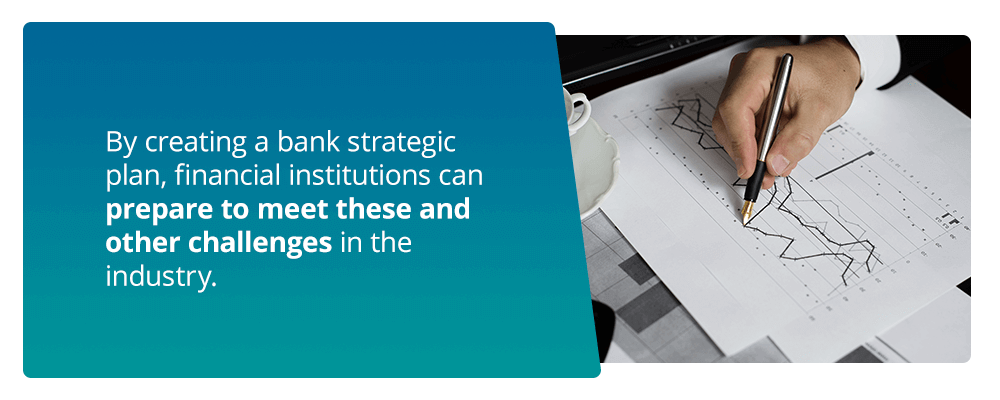
By creating a bank strategic plan, financial institutions can prepare to meet these and other challenges in the industry. Your plan can identify current goals and outline the steps you will take to achieve them. During this process, you can analyze existing strategies and find ways to enhance them.
A strategic plan can improve your financial institution’s ability to meet customer expectations. As you optimize your practices, you can establish your institution as a leader in your field.
If your financial institution is ready to create a strategic plan but isn’t sure where to start, here are some steps you can take.
- Assess current trends: One of the best ways to start the process is by examining current trends in the financial industry. For instance, you can assess its growth levels, significant leaders or competitors in the field or what services are in demand. Identifying trends can help you alter your plans to meet these needs.
- Define your mission and values: Next, identify your organization’s overall mission and values. You can use these to guide your plans and ensure your actions stay aligned with your purpose. Most mission statements are quantifiable and have a concrete deadline. For instance, you might want to reach a specific amount of revenue by a particular date. Then, as you start creating actionable steps, you can ensure they will lead to your ultimate mission.
- Analyze areas of improvement: It’s also good to identify areas of weakness within your organization. Whether you haven’t met revenue goals or want to improve your customer service, acknowledging these weaknesses can help you resolve them during your plan. You can create concrete ways to respond to lacking areas, improving efficiency and success overall.
- Outline corporate goals: Next, you should state your specific corporate goals for your institution. For instance, you might want to expand your customer base, reach a particular revenue number, or expand marketing campaigns. The more specific and quantifiable these goals are, the easier it will be to track your progress toward them.
- Delegate specific tasks: You will need your entire team’s help to achieve broad organizational goals. By breaking down tasks and regulating them to specific departments or employees, you can foster a sense of responsibility and maintain even workloads.
- Consider your budget and staff: Lastly, remember your staff and budget availability as you draft your strategic plan. Ensure you have enough resources to complete your goals by the desired deadline. For example, if you have a smaller staff, it might take you six months to reach a goal rather than three. Remembering your available resources can help you create realistic and successful objectives.

Every organization needs a strategic plan to stay on track with goals and move toward a successful future. Your plan helps you unify members around a shared vision and improve existing techniques. Strategic planning for financial institutions is crucial for overall success.
We’ve developed our financial software to meet the financial industry’s demands. Its high-quality tools and data can help you plan and execute goals. Use real-time updates to account for all data, or use our uniformly formatted reports to directly track your goal progress.
Let’s do this. To get started with AchieveIt, request a demo today .
Meet the Author Chelsea Damon
Chelsea Damon is the Content Strategist at AchieveIt. When she's not publishing content about strategy execution, you'll likely find her outside or baking bread.
Related Posts

How to Run Effective Quarterly Strategy Reviews

How to Evaluate Your Strategic Plan Properly

Balanced Strategy: Mastering the Art of Zooming In and Out
Hear directly from our awesome customers
See first-hand why the world's best leaders use AchieveIt
See AchieveIt in action
Stay in the know. Join our community of subscribers.
Subscribe for plan execution content sent directly to your inbox.

The 6 Keys to a Strategic Plan for Community Banks
by Tim Scholten | Nov 13, 2020 | Blog | 0 comments

In this article we share the 6 keys for a winning strategic plan for community banks, and the Market-Beating Strategy workbook to help your team get flawless execution and whole-team buy-in.
This article includes:
– Target Customers – Products – People – Delivery
– Service – hyper-personalized CX – Sales & Marketing – W3 – Market Beating Strategy PDF for Banks
In order for your bank to have a winning strategy, one that keeps you ahead of the market and your competition, while winning the continued favor of all your client segments, your strategy must not only address the 6 keys to a winning bank strategy, but it must also have a way to create 100% buy-in from your team so that execution is consistent and continually builds momentum.
Clarity is essential. In the absence of clarity, people will define it for themselves. This happens all too often. Leaders assume that since they have developed and communicated a plan, the team is informed and on board. Clarity takes time and repetition. It requires that peoples’ “why” questions must be answered before you obtain their commitment and buy-in.
While many banks invest significant hours and dollars into their strategic plan to “satisfy” shareholders, most strategic plans end up sitting on the shelf, collecting dust.
Why is this?
Because they are not distilled down into a simple, daily, actionable plan that can be summarized on 1 simple sheet.
While there is no specific order by which your strategic plan must be created, there are specific items that must be addressed along with a simple, flawless execution and accountability plan so that the entire team is engaged in turning your plan into reality. This requires the entire team to work cohesively to ensure that sales, systems and operations are running like a well-oiled machine.
#1 TARGET CUSTOMERS
Let’s face it, customers are always the name of the game. How we acquire and keep customers satisfied is just as important in banking as it is in any other type of business. We need simple, effective ways to acquire customers and retain them better than our competition while maintaining competitive profit margins.
Business Owners
Your team has to decide what your focus will be, whether to target business owners as customers, or consumers, or a combination of both. You will have to decide what percentage of each you want to acquire. To keep it simple, acquiring businesses as customers means lower volume but higher lifetime value (LTV) per capita.
Acquiring consumers as customers is generally the opposite, i.e. higher volume with lower LTV per capita. There’s nothing wrong with deciding on a mix of both B2B and B2C targets, as long as you have a clear acquisition strategy with clear benchmarks and ROI.
For businesses and consumers alike, you will need to intimately know 2 things:
Their Needs & Preferences.
You will also need to keep track of the cost per acquisition and the costs of maintaining their satisfaction and loyalty.
Some of the best ways to develop an understanding of their needs and preferences is to study your competition, test things with small samples of your total customer base and get customer feedback. They say that no strategy survives the first day on the battlefield, and while this may be true, customer feedback while understanding and foreseeing predictive trends in consumer behavior changes and insight is your number 1 tool for keeping a pulse on their needs and preferences, while begin able to stay ahead of the curve and make changes that serve where the market is headed and where consumers want to be. This is the difference between reactive strategy vs. proactive strategy.
In other words, the better that your bank strategy can predict coming changes in the ways the consumer thinks and desires to be served, and what they truly want from their banking experience, the better your bank will be able to acquire, serve and retain loyal customers.
To understand their needs and preferences, deep market research and trends are great guidelines to begin, but these don’t often reveal specific needs and desires. Also, you can implement a simple marketing tool we call the prospect profile quadrant, which helps you identify each segment’s desires, aspirations, fears and implications. This simple but powerful tool can help your team get into the heart and mind of each avatar (profile) in order to understand their present fears and desires, while looking out for them in order to help them avoid the future pitfalls they are afraid of while helping them design the future they desire. Using this simple tool, you can brainstorm with your team to get a firm grasp on each of your customer segments so that the rest of your strategic plan will be on target, solving real problems while fulfilling true customer needs.

#2 PRODUCTS
Next, after understanding your desired market share, their needs and preferences, you must have a systematic approach to develop the best products that meet those needs in terms of design, delivery preferences, and pricing. If you miss one of these by for your target demographics, it can create significant hurdles on your road to achieve your desired market share. It’s always good to keep an eye on your competition, but this is only a starting place. Often, it is more helpful to get outside expertise, especially from professionals who are inside the banking world and outside.
What does this look like? Over the last 20 years, a phenomena has occurred with the marriage of “crowd-sourcing” and “social innovation” to create breakthroughs in almost every sector of society, from medical advancements, to computer development, to online business growth.
By shifting Research and Development (R & D) from a “closed environment” to an “open environment” innovation and advancements in just about every industry have soared to new levels of innovative speed as well as advancements in quality.
The front-runner in this concept began with open-source software platforms that turned into global communities of innovative collaborators who cross industries to achieve advancements much faster than developing from limited lanes of experience.
In other words, if you have ever visited a blog or website, your experience was most likely enhanced by Linux, WordPress, or Drupal.
People from all walks of life work in voluntary communities to rapidly develop, maintain and evolve Internet Code and software through “crowd-sourcing” and instead of leaving the entire development to a narrow set of trained technicians (i.e. only those experienced in writing and developing code) the code bases were opened to a global community or a volunteer army with a vast array of problem-solving backgrounds!
The problem with software that is developed from a “closed” community is that those professionals are trained to see things with a limited perspective, within the confines of the science of coding. This is a generality of course, and we will share how this relates to the limitations on bank innovations in a moment. However, the idea can be extrapolated to virtually any industry, and it has. People with no medical backgrounds have helped do research and bring innovative ideas to medicine and medical technologies wherever “crowd sourcing” was able to have influence. This is why WordPress is one of the most popular and widely used website building softwares available around the globe. This is also why it is one of the most secure softwares. People from all walks of life, amateur and professional, are able to contribute innovative ideas and different perspectives on the development of the code base, and the community continues to grow.
Imagine if this same open concept were employed in the banking sector. Corporate bank teams and leaders are generally a fairly closed group when it comes to R & D, and therefore the banking community tends to lag behind when it comes to true innovation and staying ahead of customer desires and needs.
Bringing in an outside consultant is always a good idea for bank leaders to bring a fresh perspective, and the more diverse the background and experience of these “outsiders” the better chance your strategy will be leading edge instead of lagging behind. Let’s face it. Banking is filled with people who simply do what most other banks do. There is nothing unique or exciting about most of them. They simply call the same old thing something new and hope their customers buy it. The approach described above creates real innovation and ideas for addressing real customer needs, many of which have gone unaddressed for years. This is where real opportunity resides.
Product Design
The next area of strategic focus is product design. The design of your products must identify both the aesthetic appeal (consistent branding, ease of use and quality) as well as meet the unspoken needs and concerns of the customers. In order to do this, you have to put your focus on both the current and future desires of your customer “avatar”. The avatar is simply a profile of your average customer, from their age to the kind of socks they wear, and the type of music they like to listen to. Most of your customers will usually fit into 4 or 5 avatars to make up 80% to 90% of any market. Regardless of how diverse your market base is, you will find that 60 to 80% of your customer base will fall into 4 or 5 customer segments with similar desires, needs, concerns, fears etc.
Product Delivery
The delivery methods of your products must not only meet the needs of your customer base, but they must also be leading edge or innovative in terms of where your consumers are heading. Being behind on delivering modalities and technologies is unacceptable and will make your market appeal seem archaic or out-dated, and your growth will suffer for it. In layman’s terms, finding more unique ways of getting your products into customers hands is where there is real magic. Think about the following examples: A candy store gathers their customers email list and begins taking orders online and delivers right to their door. A small candy store can quickly expand their business and customer base geographically with little to no additional cost. As a bank it could mean expanding your service outside your foot print by creating the ability to serve your client base anytime and anywhere. Most people think that only large entities can afford this sort of development, when in reality most true innovation occurs in smaller organizations. It is simply finding a niche and then creating your own unique way of solving that specific need.
Product Pricing
Product pricing is a no-brainer. There must be enough margin to be competitive without going into the red. Using automation to reduce the cost of products and services will allow you to offer these services at competitive prices that may help you attract a greater percentage of customers. When you pair competitive pricing with expanded delivery capabilities you create an amazing recipe for growth. This has been a model that Walmart has used for decades. Being great at sourcing and logistics has allowed them to offer the most competitive prices that draw customers in from greater distances because of price. Fewer stores where customers will make a longer drive to stock up is a great recipe for success. This requires a real disciplined commitment to leveraging systems and technology to enhance speed, delivery, and cost advantages. Sustaining your pricing advantage will require periodic audits and reviews your entire operations as a way to continue the refinement of your operations and as a way to drive costs down while increasing customer growth, satisfaction and retention.
After understanding your customers and the products they need, your team (your people) are the most valuable asset to your bank’s health and growth. Investing regularly in improving your bank’s culture is vital for morale, which always affects the way the end customer perceives their experience with your bank. The more dynamic and exciting your internal culture is, the more this will spill over into great customer relationships and experiences, leading to higher customer satisfaction and retention. People often ask “How are people part of strategy?” To put it simply, people attract people. People do business with people they know, like and trust. Putting the right people in the right roles is critical when it comes to asking customers to trust you with your finances. Investing in the right people and delivering your services through a well trained team that can guarantee your customers a consistent quality experience will set you apart from most of your peers. Many banks fall short in attracting the right talent and in investing in the ongoing development their most valuable asset..their people.
Structure is simply how you organize to serve your customers. Keeping your structure as flat as possible keeps leadership connected with the customer. Your structure also needs to support your employees to ensure that they are equipped to service customers better than your competition. In a world where the products you offer are very similar in the customer’s eyes, how well you connect, educate and support your customers will be one of your strongest points of differentiation in the market. Having a supportive structure also will help you attract top notch talent. This means that leaders need to engage regularly with their team members to understand what is working and not working. Structure is about enabling decision making at the closest possible let to where the customer chooses to have contact with the bank. Good structure empowers people to meet the customers’ needs instead of hiding behind policy. Your structure should inform you where your service breaks down and where your customers have needs you aren’t currently meeting. All too often, management creates structures that disconnect them from the customer feedback loop and as a result, the quality of the customer experience erodes over time. Good employees become frustrated because their issues and solutions aren’t heard. And so begins the turnover of employees and customers. Something that a better team structure may have been able to help avoid.
Training & Development
One of the first things to be reduced by many banks is training and development costs during financially challenging times. It is a huge mistake. Honing your team’s skills in every area is one way to develop and retain top talent. People know when you are making ongoing investment in their ability to grow with you. Banks generally state “Our people are our most important asset”. Then they cut the training and development budget at the first sign of margin compression. That shows your people that they aren’t the most important asset. It’s merely a slogan, not the reality.
Now I am not suggesting that during challenging times, you shouldn’t scale back. But I see banks eliminate their entire training budgets during difficult times. You may need to be more creative, but don’t stop investing in your team’s development. They are what attracts and keeps your existing customers coming back. They are the people you need to outthink and outperform your competition.
Good training and development plans will extend the tenure and job satisfaction of your staff. It is one of the most significant investments you can make in your future success.
Create development plans at an individual level to ensure your team is getting what they need, but put the ownership of the plan in the employees hand to ensure they take the initiative to pursue their own development and career goals. It’s something you should lead and encourage but allow each person to drive their own plan at their own pace. This approach allows the best leaders to rise to the top.
People that feel supported by their boss tend to stay with the company. Support consists of the following things:
- Effective onboarding and training to succeed at their job. This is to ensure that they have the right tools, resources and access to leadership that they need to perform their duties.
- A leader alongside them that will mentor, encourage and support them on their journey. Think of this as a cheerleader or advocate that is diligently trying to help them get to the next level.
- Constructive feedback. What do they need to change or do differently to get to the next level? What is it that they may not be seeing about themselves or their own performance?
All too often companies fall short in setting up their newest team members for success by leaving the onboarding or training process to chance. By not taking the time to assess how well their team members feel equipped to succeed in their roles. None of this has to take a lot of time which is the general excuse for not doing it. In reality ensuring the right support systems and structure will guarantee better equipped team members that stay with your organization longer. It will save time and money in the long run.
Part 2 of this article continues on the next post … click here
Download the market beating strategy workbook by visible progress (*complimentary).
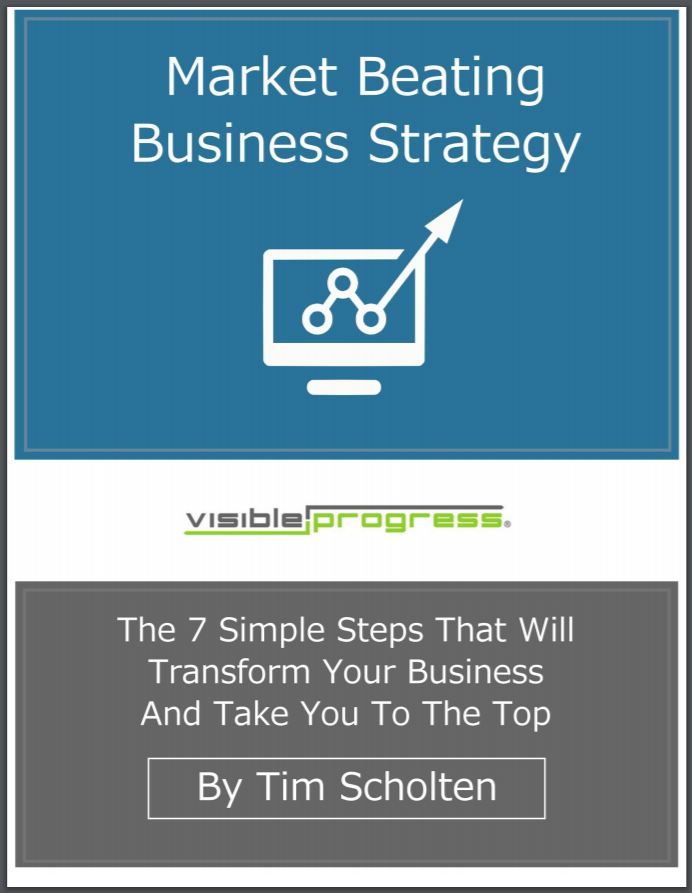
Download now
- Business is All About Relationships and It Always Has Been
by Tim Scholten | Jul 24, 2023 | Blog
Business is ALL about Relationships and It ALWAYS has been, but do you know how much revenue you are losing because your bankers have never been taught how to use client interactions to build strong relationships? It is obvious to most of us that the statement,…
- Get Personal with Banking Clients for Better Multi-Channel Utilization
by Tim Scholten | Jun 13, 2023 | Blog
While branches are still the most expensive delivery channel for your bank, it is still the most effective channel for engaging and educating your customers on how to leverage multiple channels for convenience and timely information. A recent study I read stated that…
- 3D Relationship Building Strategy
by Tim Scholten | Mar 27, 2023 | Blog
If you are a Banker and you are reading this, you can’t afford to ignore this #1 strategy if you want truly satisfied clients and thriving profitability. They say, “first impressions are everything.” But is your team consistently creating the best first impression……
Submit a Comment Cancel reply
You must be logged in to post a comment.
Popular Blog Articles
- Increase Deposit Retention and Growth with Simple Relationship Conversations
- If your mortgage business isn’t growing, it’s because you’re not marketing correctly or consistently. Here’s how to get it right.
Small Business Resources is now the Center for Business Empowerment.
Suggested Keywords
Center for Business Empowerment
How to write an effective business plan in 11 steps (with workbook)
February 02, 2023 | 14 minute read
Writing a business plan is a powerful way to position your small business for success as you set out to meet your goals. Landmark studies suggest that business founders who write one are 16% more likely to build viable businesses than those who don’t and that entrepreneurs focused on high growth are 7% more likely to have written a business plan. 1 Even better, other research shows that owners who complete business plans are twice as likely to grow their business successfully or obtain capital compared with those who don’t. 2
The best time to write a business plan is typically after you have vetted and researched your business idea. (See How to start a business in 15 steps. ) If conditions change later, you can rewrite the plan, much like how your GPS reroutes you if there is traffic ahead. When you update your plan regularly, everyone on your team, including outside stakeholders such as investors, will know where you are headed.
What is a business plan?
Typically 15-20 pages long, a business plan is a document that explains what your business does, what you want to achieve in the business and the strategy you plan to use to get there. It details the opportunities you are going after, what resources you will need to achieve your goals and how you will define success.
Why are business plans important?
Business plans help you think through barriers and discover opportunities you may have recognized subconsciously but have not yet articulated. A business plan can also help you to attract potential lenders, investors and partners by providing them with evidence that your business has all of the ingredients necessary for success.
What questions should a business plan answer?
Your business plan should explain how your business will grow and succeed. A great plan will provide detailed answers to questions that a banker or investor will have before putting money into the business, such as:
- What products or services do you provide?
- Who is your target customer?
- What are the benefits of your product and service for customers?
- How much will you charge?
- What is the size of the market?
- What are your marketing plans?
- How much competition does the business face in penetrating that market?
- How much experience does the management team have in running businesses like it?
- How do you plan to measure success?
- What do you expect the business’s revenue, costs and profit to be for the first few years?
- How much will it cost to achieve the goals stated in the business plan?
- What is the long-term growth potential of the business? Is the business scalable?
- How will you enable investors to reap the rewards of backing the business? Do you plan to sell the business to a bigger company eventually or take it public as your “exit strategy”?
How to write a business plan in 11 steps
This step-by-step outline will make it easier to write an effective business plan, even if you’re managing the day-to-day demands of starting a new business. Creating a table of contents that lists key sections of the plan with page numbers will make it easy for readers to flip to the sections that interest them most.
- Use our editable workbook to capture notes and organize your thoughts as you review these critical steps. Note: To avoid losing your work, please remember to save this PDF to your desktop before you begin.
1. Executive summary
The executive summary is your opportunity to make a great first impression on investors and bankers. It should be just as engaging as the enthusiastic elevator pitch you might give if you bumped into a potential backer in an elevator.
In three to five paragraphs, you’ll want to explain what your business does, why it will succeed and where it will be in five years. The executive summary should include short descriptions of the following:
- Business concept. What will your business do?
- Goals and vision. What do you expect the business to achieve, both financially and for other key stakeholders, such as the community?
- Product or service. What does your product or service do — and how is it different from those of competitors?
- Target market. Who do you expect to buy your product or service?
- Marketing strategy. How will you tell people about your product or service?
- Current revenue and profits. If your business is pre-revenue, offer sales projections.
- Projected revenue and profits. Provide a realistic look at the next year, as well as the next three years, ideally.
- Financial resources needed. How much money do you need to borrow or raise to fund your plan?
- Management team. Who are the company’s leaders and what relevant experience will they contribute?
2. Business overview
Here is where you provide a brief history of the business and describe the product(s) or service(s) it offers. Make sure you describe the problem you are attempting to solve, for whom you will solve it (your customers) and how you will solve it. Be sure to describe your business model (such as direct-to-consumer sales through an online store) so readers can envision how you will make sales. Also mention your business structure (such as a sole proprietorship , general partnership, limited partnership or corporation) and why it is advantageous for the business. And be sure to provide context on the state of your industry and where your business will fit into it.
3. Business goals and vision
Explain what you hope to achieve in the business (your vision) as well as its mission and value proposition. Most founders judge success by the size to which they grow the business using measures such as revenue or number of employees. Your goals may not be solely financial. You may also wish to provide jobs or solve a societal problem. If that’s the case, mention those goals as well.
If you are seeking outside funding, explain why you need the money, how you will put it to work to grow the business and how you expect to achieve the goals you have set for the business. Also explain your exit strategy—that is, how you would enable investors to cash out, whether that means selling the business or taking it public.
4. Management and organization
Many investors say they bet on the team behind a business more than the business idea, trusting that talented and experienced people will be capable of bringing sound business concepts to life. With that in mind, make sure to provide short bios of the key members of your management team (including yourself) that emphasize the relevant experience each individual brings, along with their special talents and industry recognition. Many business plans include headshots of the management team with the bios.
Also describe more about how your organization will be structured. Your company may be a sole proprietorship, a limited liability company (LLC) or a corporation in one or more states.
If you will need to hire people for specific roles, this is the place to mention those plans. And if you will rely on outside consultants for certain roles — such as an outsourced CFO — be sure to make a note of it here. Outside backers want to know if you’ve anticipated the staffing you need.
5. Service or product line
A business will only succeed if it sells something people want or need to buy. As you describe the products or services you will offer, make sure to explain what benefits they will provide to your target customers, how they will differ from competing offerings and what the buying cycle will likely be so it is clear that you can actually sell what you are offering. If you have plans to protect your intellectual property through a copyright or patent filing, be sure to mention that. Also explain any research and development work that is underway to show investors the potential for additional revenue streams.
6. Market/industry analysis
Anyone interested in providing financial backing to your business will want to know how big your company can potentially grow so they have an idea of what kind of returns they can expect. In this section, you’ll be able to convey that by explaining to whom you will be selling and how much opportunity there is to reach them. Key details to include are market size; a strengths, weaknesses, opportunities and threats (SWOT) analysis ; a competitive analysis; and customer segmentation. Make it clear how you developed any projections you’ve made by citing interviews or research.
Also describe the current state of the industry. Where is there room for improvement? Are most companies using antiquated processes and technology? If your business is a local one, what is the market in your area like? Do most of the restaurants where you plan to open your café serve mediocre food? What will you do better?
In this section, also list competitors, including their names, websites and social media handles. Describe each source of competition and how your business will address it.
7. Sales and marketing
Explain how you will spread the word to potential customers about what you sell. Will you be using paid online search advertising, social media promotions, traditional direct mail, print advertising in local publications, sponsorship of a local radio or TV show, your own YouTube content or some other method entirely? List all of the methods you will use.
Make sure readers know exactly what the path to a sale will be and why that approach will resonate with customers in your ideal target markets as well as existing customer segments. If you have already begun using the methods you’ve outlined, include data on the results so readers know whether they have been effective.
8. Financials
In a new business, you may not have any past financial data or financial statements to include, but that doesn’t mean you have nothing to share. Preparing a budget and financial plan will help show investors or bankers that you have developed a clear understanding of the financial aspects of running your business. (The U.S. Small Business Administration (SBA) has prepared a guide you can use; SCORE , a nonprofit organization that partners with the SBA, offers a financial projections template to help you look ahead.) For an existing business, you will want to include income statements, profit and loss statements, cash flow statements and balance sheets, ideally going back three years.
Make a list of the specific steps you plan to take to achieve the financial results you have outlined. The steps are generally the most detailed for the first year, given that you may need to revise your plan later as you gather feedback from the marketplace.
Include interactive spreadsheets that contain a detailed financial analysis showing how much it costs your business to produce the goods and services you provide, the profits you will generate, any planned investments and the taxes you will pay. See our startup costs calculator to get started.
9. Financial projections
Creating a detailed sales forecast can help you get outside backers excited about supporting you. A sales forecast is typically a table or simple line graph that shows the projected sales of the company over time with monthly or quarterly details for the next 12 months and a broader projection as much as five years into the future. If you haven’t yet launched the company, turn to your market research to develop estimates. For more information, see “ How to create a sales forecast for your small business. ”
10. Funding request
If you are seeking outside financing such as a loan or equity investment, your potential backers will want to know how much money you need and how you will spend it. Describe the amount you are trying to raise, how you arrived at that number and what type of funding you are seeking (such as debt, equity or a combination of both). If you are contributing some of your own funds, it is worth noting this, as it shows that you have skin in the game.
11. Appendix
This should include any information and supporting documents that will help investors and bankers gain a greater understanding of the potential of your business. Depending on your industry, you might include local permits, licenses, deeds and other legal documents; professional certifications and licenses; media clips; information on patents and other intellectual property; key customer contracts and purchase orders; and other relevant documents.
Some business owners find it helpful to develop a list of key concepts, such as the names of the company’s products and industry terms. This can be helpful if you do business in an industry that may not be familiar to the readers of the business plan.
Tips for creating an effective business plan
Use clear, simple language. It’ll be easier to win people over if your plan is easy to read. Steer clear of industry jargon, and if you must use any phrases the average adult won’t know, be sure to define them.
Emphasize what makes your business unique. Investors and bankers want to know how you will solve a problem or gap in the marketplace differently from anyone else. Make sure you’re conveying your differentiating factors.
Nail the details. An ideal business plan will be detailed and accurate. Make sure that any financial projections you make are realistic and grounded in solid market research. (If you need help in making your calculations, you can get free advice at SCORE.) Seasoned bankers and investors will quickly spot numbers that are overly optimistic.
Take time to polish it. Your final version of the plan should be neat and professional with an attractive layout and copy that has been carefully proofread.
Include professional photos. High-quality shots of your product or place of business can help make it clear why your business stands out.
Updating an existing business plan
Some business owners in rapidly growing businesses update their business plan quarterly. Others do so every six months or every year. When you update your plan make sure you consider these three things:
- Are your goals still current? As you’ve tested your concept, your goals may have changed. The plan should reflect this.
- Have you revised any strategies in response to feedback from the marketplace? You may have found that your offerings resonated with a different customer segment than you expected or that your advertising plan didn’t work and you need to try a different approach. Given that investors will want to see a marketing and advertising plan that works, keeping this section current will ensure you are always ready to meet with one who shows interest.
- Have your staffing needs changed? If you set ambitious goals, you may need help from team members or outside consultants you did not anticipate when you first started the business. Take stock now so you can plan accordingly.
Final thoughts
Most business owners don’t follow their business plans exactly. But writing one will get you off to a much better start than simply opening your doors and hoping for the best, and it will be easier to analyze any aspects of your business that aren’t working later so you can course-correct. Ultimately, it may be one of the best investments you can make in the future of your business.
Business plan FAQs
What are common mistakes when writing a business plan.
The biggest mistake you can make when writing a business plan is creating one before the idea has been properly researched and tested. Not every idea is meant to become a business. Other common mistakes include:
- Not describing your management team in a way that is appealing to investors. Simply cutting and pasting someone’s professional bio into the management section won’t do the trick. You’ll want to highlight the credentials of each team member in a way that is relevant to this business.
- Failing to include financial projections — or including overly optimistic ones. Investors look at a lot of business plans and can tell quickly whether your numbers are accurate or pie in the sky. Have a good small business accountant review your numbers to make sure they are realistic.
- Lack of a clear exit strategy for investors. Investors may want the option to cash out eventually and would want to know how they can go about doing that.
- Slapdash presentation. Make sure to fact-check any industry statistics you cite and that any charts, graphs or images are carefully prepared and easy to read.
What are the different types of business plans?
There are a variety of styles of business plans. Here are three major types:
Traditional business plan. This is a formal document for pitching to investors based on the outline in this article. If your business is a complicated one, the plan may exceed the typical length and stretch to as many as 50 pages.
One-page business plan. This is a simplified version of a formal business plan designed to fit on one page. Typically, each section will be described in bullet points or in a chart format rather than in the narrative style of an executive summary. It can be helpful as a summary document to give to investors — or for internal use. Another variation on the one-page theme is the business model canvas .
Lean plan. This methodology for creating a business plan is ideal for a business that is evolving quickly. It is designed in a way that makes it easy to update on a regular basis. Lean business plans are usually about one page long. The SBA has provided an example of what this type of plan includes on its website.
Is the business plan for a nonprofit different from the plan for other business types?
Many elements of a business plan for a nonprofit are similar to those of a for-profit business. However, because the goal of a nonprofit is achieving its mission — rather than turning a profit — the business plan should emphasize its specific goals on that front and how it will achieve them. Many nonprofits set key performance indicators (KPIs) — numbers that they track to show they are moving the needle on their goals.
Nonprofits will generally emphasize their fundraising strategies in their business plans rather than sales strategies. The funds they raise are the lifeblood of the programs they run.
What is the difference between a business plan, a strategic plan and a marketing plan?
A strategic plan is different from the type of business plan you’ve read about here in that it emphasizes the long-term goals of the business and how your business will achieve them over the long run. A strong business plan can function as both a business plan and a strategic plan.
A marketing plan is different from a business plan in that it is focused on four main areas of the business: product (what you are selling and how you will differentiate it), price (how much your products or services will cost and why), promotion (how you will get your ideal customer to notice and buy what you are selling) and place (where you will sell your products). A thorough business plan may cover these topics, doing double duty as both a business plan and a marketing plan.
Explore more
Editable business plan workbook

Starting a new business
1 . Francis J. Green and Christian Hopp. “Research: Writing a Business Plan Makes Your Startup More Likely to Succeed.” HBR. July 14, 2017. Available online at https://hbr.org/2017/07/research-writing-a-business-plan-makes-your-startup-more-likely-to-succeed.
2 . CorpNet, “The Startup Business Plan: Why It’s Important and How You Can Create One,” June 29, 2022.
Important Disclosures and Information
Bank of America, Merrill, their affiliates and advisors do not provide legal, tax or accounting advice. Consult your own legal and/or tax advisors before making any financial decisions. Any informational materials provided are for your discussion or review purposes only. The content on the Center for Business Empowerment (including, without limitations, third party and any Bank of America content) is provided “as is” and carries no express or implied warranties, or promise or guaranty of success. Bank of America does not warrant or guarantee the accuracy, reliability, completeness, usefulness, non-infringement of intellectual property rights, or quality of any content, regardless of who originates that content, and disclaims the same to the extent allowable by law. All third party trademarks, service marks, trade names and logos referenced in this material are the property of their respective owners. Bank of America does not deliver and is not responsible for the products, services or performance of any third party.
Not all materials on the Center for Business Empowerment will be available in Spanish.
Certain links may direct you away from Bank of America to unaffiliated sites. Bank of America has not been involved in the preparation of the content supplied at unaffiliated sites and does not guarantee or assume any responsibility for their content. When you visit these sites, you are agreeing to all of their terms of use, including their privacy and security policies.
Credit cards, credit lines and loans are subject to credit approval and creditworthiness. Some restrictions may apply.
Merrill Lynch, Pierce, Fenner & Smith Incorporated (also referred to as “MLPF&S" or “Merrill") makes available certain investment products sponsored, managed, distributed or provided by companies that are affiliates of Bank of America Corporation (“BofA Corp."). MLPF&S is a registered broker-dealer, registered investment adviser, Member SIPC , and a wholly owned subsidiary of BofA Corp.
Banking products are provided by Bank of America, N.A., and affiliated banks, Members FDIC, and wholly owned subsidiaries of BofA Corp.
“Bank of America” and “BofA Securities” are the marketing names used by the Global Banking and Global Markets division of Bank of America Corporation. Lending, derivatives, other commercial banking activities, and trading in certain financial instruments are performed globally by banking affiliates of Bank of America Corporation, including Bank of America, N.A., Member FDIC. Trading in securities and financial instruments, and strategic advisory, and other investment banking activities, are performed globally by investment banking affiliates of Bank of America Corporation (“Investment Banking Affiliates”), including, in the United States, BofA Securities, Inc., which is a registered broker-dealer and Member of SIPC , and, in other jurisdictions, by locally registered entities. BofA Securities, Inc. is a registered futures commission merchant with the CFTC and a member of the NFA.
Investment products:
- Asia Pacific
- Middle East and Africa
Six strategies for improving banks’ operating efficiency

With the challenges banks are facing these days, it’s becoming clear that banking executives must get the best “bang for the buck” from all resource expenditures. Continued inefficiency at a bank might be robbing important efforts of the resources banks need to be fully successful. But a focus on cutting costs alone is not a formula for long-term success. A balanced approach – one that enables a bank not only to improve operating efficiency but also to upgrade its capabilities to respond to market needs and prepare for the future – is imperative to the success of a bank’s operations and profitability.

Why efficiency matters for bank operations
Setting operating targets for improvement, six strategies for improving efficiencies of banking operations, 1. business realignment, 2. channel optimization , 3. process costs , 4. staff productivity , 5. technology and automation , 6. vendor relationships.
Other basic cost-cutting techniques include consolidating vendors and benchmarking costs against comparable services in the market. Bear in mind as well that vendor relationships can have an effect on regulators’ view of the institution’s risk profile.
Instilling a culture that values efficiency

Six digital growth strategies for banks
Despite the headlines about digital disruption in financial services, big banks are actually holding their own. Globally, financial-services revenues have grown 4 percent annually over the past ten years (thanks largely to growth in emerging markets), and fintech start-ups and large tech companies have so far captured only tiny slivers of market share.
Stay current on your favorite topics
But digital technology and big data/analytics are still poised to shake up the financial-services industry. Investors believe fintech start-ups will become a significant force in the future, valuing those in the US at $120 billion, or 7 percent of the total equity of US banks.
As we see it, many banks haven’t set their sights nearly high enough in response to disruptive attackers. They’ve been overly cautious, playing defense, with me-too digital initiatives primarily designed to counter moves by actual or potential disruptors. Even banks that would like to be more aggressive find it difficult to know exactly what to do. Large banks—like many incumbents—have been inundated with new technologies and business opportunities, leaving them confused about where to focus and dissipating their resources.
Most big banks have the tools and advantages to push the boundaries of their existing business models. And they’re certainly motivated. What hampers their progress is uncertainty about how best to build on core strengths to create sustainable outcomes.
To provide a structure for navigating this chaos, and to galvanize the shift to bolder thinking, we’ve identified six opportunities for banks to fuel future growth.
1. Grow beyond your core into relevant ecosystems
Banks have long relied on making customers aware of relevant products as a path to growth. In the past, that approach was about introducing other banking products. For example, a customer with a checking account would be encouraged to consider a personal line of credit, a home-improvement loan, or a bank credit card (see inner circle of exhibit, labeled Core).
A narrow focus on core adjacencies ignores the broader role a bank can play on behalf of its customers. By moving into ecosystems beyond the traditional core, banks are able to tap their existing client base and operational capabilities, strengthen engagement, and capture data that will provide a more complete view of customers’ needs.
Ideabank and ING, for example, have extended into banking adjacencies (see middle ring in exhibit) by providing services like accounts-receivable management, factoring, accounting, and cash-flow analysis to small and medium enterprise (SME) customers. The fintech start-up Moven built a pioneering mobile money-management app and is now partnering with financial institutions to provide this service to retail customers.
Some banks have even gone farther and moved into nonbanking adjacencies (see outer ring in exhibit). Post Bank, for example, has become the largest provider of mobile phone services in Italy. Other banks are partnering with care providers and health insurers to provide a consolidated billing platform that makes it easier for consumers to pay for medical expenses.
Extending beyond the core can allow banks to form a network of value across industries and create their own “ecosystems” that provide the services customers want at lower cost and with greater convenience. In addition to generating new revenues, ecosystems of this sort can protect banks from the efforts of fintech start-ups and digital giants to invade banking’s traditional turf.
Banks should consider this option if … they have significant market share in one or more core product areas. Banks in this position may find it difficult to increase their share in existing segments. Moving into adjacencies—both banking and nonbanking—allows them to take advantage of their already strong franchises by offering new services to current customers.
2. Create a financial supermarket
Taking a page from some of the larger digital businesses, banks can offer a curated and vetted mix of internal and third-party offerings. This aggregation model provides customers with easy, one-stop access to financial products and the ability to address multiple financial needs through a single, integrated channel. Building a financial supermarket allows a bank to focus on the high-return side of the industry: average annual return on equity (RoE) for providing credit from bank balance sheets is only 6 percent , while RoE for product origination/sales is 22 percent. 1 1. RoE figures based on analysis by McKinsey’s Financial Services Practice.
In the United Kingdom, for instance, 60 percent of auto-insurance policies are sold through aggregators. And Bank Bazaar in India, a pure-play financial supermarket with no proprietary offerings of its own, offers a full set of services from more than 50 institutions to more than 23 million customers.
To build privileged relationships with customers, some financial supermarkets rely on recommendation engines, which use transaction, merchant, and customer data generated from the platform to provide personalized suggestions and offers. This kind of helpful, concierge-style service can reduce the risk of disintermediation.
Banks should consider this option if.... breadth of choice or price comparisons are important to customers. The former is often the case with investment products, for example, and the latter for property-and-casualty insurance. A supermarket approach can allow banks without a strong position in such areas to grow in these segments as a complement to their current offerings.
3. Extend value across the customer journey
For most consumers, working with a bank is just a means to an end: ensuring a secure retirement, growing a business, or buying a home, for example. Most banks, however, tend to focus only on discrete, bank-centered moments in the customer’s overall journey, such as offering a mortgage, when the customer’s larger goal is buying the house. By attending only to the bank-related part of the overall journey, banks leave considerable value on the table.
Banks can grow by engaging with consumers at other stages of their decision journey. For example, a bank might give advice to customers on how much to save for retirement or borrow for a home, or help them to determine the best rates and maturities for financial instruments.
Would you like to learn more about Digital McKinsey ?
Commonwealth Bank in Australia (CBA), for example, wanted to play a bigger role in the home buyer’s journey. CBA created an augmented-reality app that allows users to point their smartphone’s camera at a property and instantly see its current price and sales history. The app also provides a mortgage calculator and other financial tools, plus the option to connect with local realtors. In the six months after the app’s release, customers searched more than a million properties, and the bank estimated the project’s return on investment at more than 100 percent. 2 2. Peter Weill and Stephanie L. Woerner, “Thriving in an Increasingly Digital Ecosystem,” Sloan Management Review , Summer 2015, 27-34. See also Commonwealth Bank, Investorville Case Study, 2013.
Banks should consider this option if.... they have significant market share in financial products that are integral to a larger buying process. Mortgages (tied to home buying), auto finance (tied to car buying), and credit cards (tied to taxi/ride-sharing trips and restaurant visits) are examples of such products. Engaging across buying journeys can allow banks in such a position to gain access to a larger pool of potential revenue and enrich the overall relationship with their customers.
4. Monetize your data
More than half of financial-services respondents in a recent McKinsey survey said their companies have begun monetizing data. What’s more, data monetization seems to correlate with industry-leading performance.
There are multiple ways to monetize data. The first is for a bank to use its internal data more effectively for its own operations by adding new analytics capabilities. Another is to create new offerings, such as reports or benchmark analytics, based on bank data. Several of Canada’s biggest banks have partnered with Toronto-based SecureKey in a system that allows individuals to use their bank credentials to access online services from the federal government. The system works in much the same way as websites that allow users to log in using their Facebook account—except in this case, Canadian government agencies provide access to online services when visitors enter their bank credentials. The banks just use the data they already have to verify their customers’ identities, but then provide it as a secure capability at a truly national scale and gain access to new potential customers.
Most banks have a rich set of exclusive information on their customers (key demographic details, where they live, their lifestyle preferences). When used responsibly, with respect for regulatory constraints and privacy concerns, this bank data can be analyzed for insights valuable to companies in industries outside of financial services, such as telecom, retail, consumer goods, or automotive. Bank-issued credit cards , for example, have access to data on both consumers and merchants, which can be sold to retailers.
Banks should consider this option if … they already possess an information advantage over competitors—or if they have the prospect of creating an information advantage, or extending an existing one, via external investments or partnerships.

Remaking the bank for an ecosystem world
5. become a product- or infrastructure-sourcing factory.
Many banks and fintechs are locked in a battle over the customer-facing front end. But large institutions can create significant value by leveraging back-end assets to create and provide products or services to smaller banks and other businesses. That’s because many small and nontraditional institutions lack core banking products, infrastructure, capital assets, or even banking licenses, and don’t have the reach or resources to acquire them.
Large financial institutions can address this need by developing a portfolio of white-label products to sell to or through third parties, providing infrastructure as a service, and even “renting” their balance sheet to small and nonfinancial players. The classic example of this kind of service is banks providing credit-card processing to retailers. In the evolving digital era, many new opportunities to offer services like this are emerging.
ING, for example, has partnered with US-based fintech start-up Kabbage to serve SME customers in Europe. Kabbage’s easy-to-use interface and novel risk-management algorithms allow it to deliver decisions on loan applications in a matter of minutes. As a start-up, Kabbage had a distinctive new capability but lacked capital and customer relationships. ING brought to the partnership its deep reservoir of capital and its existing relationships with prospective SME customers.
Banks should consider this option if.... they possess a significant back-end capability that others don’t have and the ability to extend it into other environments securely. Banks considering a factory plan, for example, should have enough tech talent (particularly around APIs) to be able to maintain appropriate levels of security while serving the given product or service to third parties. In addition to opening up new revenue streams, this approach can also be a useful way for to banks to collect new data.
6. Become a digital attacker
By employing digital channels or novel business models, incumbent banks can enter new geographies or market segments that would be prohibitively expensive targets using traditional approaches.
ING Direct was the original digital attacker, starting as an exclusively online bank in 1996 and attracting more than 20 million customers in 9 countries over a little more than a decade, before spinning off several of its national subsidiaries in the late 2010s. 3 3. Arkadi Kuhlmann and Bruce Philp, The Orange Code: How ING Direct succeeded by being a rebel with a cause , Wiley, 2008.
Banks should consider this option if.... they want to enter new markets or segments without the need to invest in the physical infrastructure that would otherwise make such moves prohibitively expensive. This approach is useful for exploring market opportunities, but it requires sufficient digital skills (design, customer experience, analytics, etc.), the expertise to scale wins, and the management discipline to kill off poor performers.
How should banks decide which unconventional growth opportunities to pursue? There is no one-size-fits-all answer.
We’ve found that most large institutions already have some initiatives underway that involve pursuing one or more of these six growth strategies. Existing efforts can provide important information about which opportunities are promising and what’s required for success. That said, most such initiatives are small and typically need to be scaled up to take full advantage of opportunities large banks face.
To begin, banks should think hard about a series of questions:
- Which unconventional growth opportunities represent a good fit with current resources and competitive position?
- How many of the opportunities can reasonably be pursued and over what time?
- What governance structures should be established, and what organizational approaches employed? Innovate from within existing businesses, set up separate units, or partner with/acquire from outside?
- What capabilities should be in place to go after these opportunities?
No matter which opportunities banks decide to pursue, they will need to commit to—and invest in—new digital capabilities in areas like design, innovation, data and analytics, personalization, and digital marketing. A headlong dash toward developing “all” these capabilities isn’t the answer. We have seen companies lose focus and dissipate energies by trying to do too much at once.
In our experience, the most effective route is to develop a clear view of which capabilities can deliver the most value quickly and power a broader digital transformation. The important thing is to get going, to act with a sense of urgency—like an attacker seeking growth, not merely a defender hoping to hold onto a legacy position.
Somesh Khanna is a senior partner based in McKinsey’s New York office and global leader of Digital McKinsey in financial services. Heitor Martins is a senior partner based in our São Paulo office and leads Digital McKinsey in Latin America.
Explore a career with us
Related articles.

PSD2: Taking advantage of open-banking disruption

Competing in a world of digital ecosystems

How to Write a Successful Digital Bank Business Plan (+ Template)

Creating a business plan is essential for any business, but it can be especially helpful for digital bank businesses that want to improve their strategy or raise funding.
A well-crafted business plan outlines the vision for your company, but also documents a step-by-step roadmap of how you will accomplish it. To create an effective business plan, you must first understand the components essential to its success.
This article provides an overview of the critical elements every digital bank business owner should include in their business plan.
Download the Ultimate Business Plan Template
What is a Digital Bank Business Plan?
A digital bank business plan is a formal written document describing your company’s business strategy and feasibility. It documents the reasons you will be successful, your areas of competitive advantage, and it includes information about your team members. Your business plan is a critical document that will convince investors and lenders (if needed) that you are positioned to become a successful venture.
Why Write a Digital Bank Business Plan?
A digital bank business plan is required for banks and investors. The document is a clear and concise guide to your business idea and the steps you will take to make it profitable.
Entrepreneurs can also use this as a roadmap when starting their new company or venture, especially if they are inexperienced in starting a business.
Writing an Effective Digital Bank Business Plan
The following are the critical components of a successful digital bank business plan:
Executive Summary
The executive summary of a digital bank business plan is a one- to two-page overview of your entire business plan. It should summarize the main points, which will be presented in full in the rest of your business plan.
- Start with a one-line description of your digital bank company
- Provide a summary of the key points in each section of your business plan, which includes information about your company’s management team, industry analysis, competitive analysis, and financial forecast, among others.
Company Description
This section should include a brief history of your company. Include a short description of how your company started and provide a timeline of milestones your company has achieved.
You may not have a long company history if you are just starting your digital bank business. Instead, you can include information about your professional experience in this industry and how and why you conceived your new venture. If you have worked for a similar company or been involved in an entrepreneurial venture before starting your digital bank firm, mention this.
You will also include information about your chosen digital bank business model and how, if applicable, it is different from other companies in your industry.
Industry Analysis
The industry or market analysis is an important component of a digital bank business plan. Conduct thorough market research to determine industry trends and document the size of your market.
Questions to answer include:
- What part of the digital bank industry are you targeting?
- How big is the market?
- What trends are happening in the industry right now (and if applicable, how do these trends support your company’s success)?
You should also include sources for your information, such as published research reports and expert opinions.
Customer Analysis
This section should include a list of your target audience(s) with demographic and psychographic profiles (e.g., age, gender, income level, profession, job titles, interests). You will need to provide a profile of each customer segment separately, including their needs and wants.
For example, a digital bank business’ customers may include:
- Small businesses that need online banking solutions
- Start-ups and tech companies that are looking for innovative ways to manage their finances
- Freelancers and consultants who need a simple way to get paid and track expenses
You can include information about how your customers decide to buy from you and what keeps them buying from you.
Develop a strategy for targeting those customers who are most likely to buy from you, as well as those that might be influenced to buy your products or digital bank services with the right marketing.
Competitive Analysis
The competitive analysis helps you determine how your product or service will differ from competitors, and what your unique selling proposition (USP) might be that will set you apart in this industry.
For each competitor, list their strengths and weaknesses. Next, determine your areas of competitive advantage; that is, in what ways are you different from and ideally better than your competitors.
Below are sample competitive advantages your digital bank business may have:
- 24/7 customer service
- Higher deposit limits
- More locations
- Better mobile app
Marketing Plan
This part of the business plan is where you determine and document your marketing plan. . Your plan should be laid out, including the following 4 Ps.
- Product/Service : Detail your product/service offerings here. Document their features and benefits.
- Price : Document your pricing strategy here. In addition to stating the prices for your products/services, mention how your pricing compares to your competition.
- Place : Where will your customers find you? What channels of distribution (e.g., partnerships) will you use to reach them if applicable?
- Promotion : How will you reach your target customers? For example, you may use social media, write blog posts, create an email marketing campaign, use pay-per-click advertising, or launch a direct mail campaign. Or you may promote your digital bank business via a PR or influencer marketing campaign.
Operations Plan
This part of your digital bank business plan should include the following information:
- How will you deliver your product/service to customers? For example, will you do it in person or over the phone?
- What infrastructure, equipment, and resources are needed to operate successfully? How can you meet those requirements within budget constraints?
You also need to include your company’s business policies in the operations plan. You will want to establish policies related to everything from customer service to pricing, to the overall brand image you are trying to present.
Finally, and most importantly, your Operations Plan will outline the milestones your company hopes to achieve within the next five years. Create a chart that shows the key milestone(s) you hope to achieve each quarter for the next four quarters, and then each year for the following four years. Examples of milestones for a digital bank business include reaching $X in sales. Other examples include expanding to new markets, developing new products and services, and hiring new personnel.
Management Team
List your team members here, including their names and titles, as well as their expertise and experience relevant to your specific digital bank industry. Include brief biography sketches for each team member.
Particularly if you are seeking funding, the goal of this section is to convince investors and lenders that your team has the expertise and experience to execute on your plan. If you are missing key team members, document the roles and responsibilities, you plan to hire for in the future.
Financial Plan
Here, you will include a summary of your complete and detailed financial plan (your full financial projections go in the Appendix).
This includes the following three financial statements:
Income Statement
Your income statement should include:
- Revenue : how much revenue you generate.
- Cost of Goods Sold : These are your direct costs associated with generating revenue. This includes labor costs, as well as the cost of any equipment and supplies used to deliver the product/service offering.
- Net Income (or loss) : Once expenses and revenue are totaled and deducted from each other, this is the net income or loss.
Sample Income Statement for a Startup Digital Bank Firm
| Revenues | $ 336,090 | $ 450,940 | $ 605,000 | $ 811,730 | $ 1,089,100 |
| $ 336,090 | $ 450,940 | $ 605,000 | $ 811,730 | $ 1,089,100 | |
| Direct Cost | |||||
| Direct Costs | $ 67,210 | $ 90,190 | $ 121,000 | $ 162,340 | $ 217,820 |
| $ 67,210 | $ 90,190 | $ 121,000 | $ 162,340 | $ 217,820 | |
| $ 268,880 | $ 360,750 | $ 484,000 | $ 649,390 | $ 871,280 | |
| Salaries | $ 96,000 | $ 99,840 | $ 105,371 | $ 110,639 | $ 116,171 |
| Marketing Expenses | $ 61,200 | $ 64,400 | $ 67,600 | $ 71,000 | $ 74,600 |
| Rent/Utility Expenses | $ 36,400 | $ 37,500 | $ 38,700 | $ 39,800 | $ 41,000 |
| Other Expenses | $ 9,200 | $ 9,200 | $ 9,200 | $ 9,400 | $ 9,500 |
| $ 202,800 | $ 210,940 | $ 220,871 | $ 230,839 | $ 241,271 | |
| EBITDA | $ 66,080 | $ 149,810 | $ 263,129 | $ 418,551 | $ 630,009 |
| Depreciation | $ 5,200 | $ 5,200 | $ 5,200 | $ 5,200 | $ 4,200 |
| EBIT | $ 60,880 | $ 144,610 | $ 257,929 | $ 413,351 | $ 625,809 |
| Interest Expense | $ 7,600 | $ 7,600 | $ 7,600 | $ 7,600 | $ 7,600 |
| $ 53,280 | $ 137,010 | $ 250,329 | $ 405,751 | $ 618,209 | |
| Taxable Income | $ 53,280 | $ 137,010 | $ 250,329 | $ 405,751 | $ 618,209 |
| Income Tax Expense | $ 18,700 | $ 47,900 | $ 87,600 | $ 142,000 | $ 216,400 |
| $ 34,580 | $ 89,110 | $ 162,729 | $ 263,751 | $ 401,809 | |
| 10% | 20% | 27% | 32% | 37% | |
Balance Sheet
Include a balance sheet that shows your assets, liabilities, and equity. Your balance sheet should include:
- Assets : All of the things you own (including cash).
- Liabilities : This is what you owe against your company’s assets, such as accounts payable or loans.
- Equity : The worth of your business after all liabilities and assets are totaled and deducted from each other.
Sample Balance Sheet for a Startup Digital Bank Firm
| Cash | $ 105,342 | $ 188,252 | $ 340,881 | $ 597,431 | $ 869,278 |
| Other Current Assets | $ 41,600 | $ 55,800 | $ 74,800 | $ 90,200 | $ 121,000 |
| Total Current Assets | $ 146,942 | $ 244,052 | $ 415,681 | $ 687,631 | $ 990,278 |
| Fixed Assets | $ 25,000 | $ 25,000 | $ 25,000 | $ 25,000 | $ 25,000 |
| Accum Depreciation | $ 5,200 | $ 10,400 | $ 15,600 | $ 20,800 | $ 25,000 |
| Net fixed assets | $ 19,800 | $ 14,600 | $ 9,400 | $ 4,200 | $ 0 |
| $ 166,742 | $ 258,652 | $ 425,081 | $ 691,831 | $ 990,278 | |
| Current Liabilities | $ 23,300 | $ 26,100 | $ 29,800 | $ 32,800 | $ 38,300 |
| Debt outstanding | $ 108,862 | $ 108,862 | $ 108,862 | $ 108,862 | $ 0 |
| $ 132,162 | $ 134,962 | $ 138,662 | $ 141,662 | $ 38,300 | |
| Share Capital | $ 0 | $ 0 | $ 0 | $ 0 | $ 0 |
| Retained earnings | $ 34,580 | $ 123,690 | $ 286,419 | $ 550,170 | $ 951,978 |
| $ 34,580 | $ 123,690 | $ 286,419 | $ 550,170 | $ 951,978 | |
| $ 166,742 | $ 258,652 | $ 425,081 | $ 691,831 | $ 990,278 | |
Cash Flow Statement
Include a cash flow statement showing how much cash comes in, how much cash goes out and a net cash flow for each year. The cash flow statement should include ash flow from:
- Investments
Below is a sample of a projected cash flow statement for a startup digital bank business.
Sample Cash Flow Statement for a Startup Digital Bank Firm
| Net Income (Loss) | $ 34,580 | $ 89,110 | $ 162,729 | $ 263,751 | $ 401,809 |
| Change in Working Capital | $ (18,300) | $ (11,400) | $ (15,300) | $ (12,400) | $ (25,300) |
| Plus Depreciation | $ 5,200 | $ 5,200 | $ 5,200 | $ 5,200 | $ 4,200 |
| Net Cash Flow from Operations | $ 21,480 | $ 82,910 | $ 152,629 | $ 256,551 | $ 380,709 |
| Fixed Assets | $ (25,000) | $ 0 | $ 0 | $ 0 | $ 0 |
| Net Cash Flow from Investments | $ (25,000) | $ 0 | $ 0 | $ 0 | $ 0 |
| Cash from Equity | $ 0 | $ 0 | $ 0 | $ 0 | $ 0 |
| Cash from Debt financing | $ 108,862 | $ 0 | $ 0 | $ 0 | $ (108,862) |
| Net Cash Flow from Financing | $ 108,862 | $ 0 | $ 0 | $ 0 | $ (108,862) |
| Net Cash Flow | $ 105,342 | $ 82,910 | $ 152,629 | $ 256,551 | $ 271,847 |
| Cash at Beginning of Period | $ 0 | $ 105,342 | $ 188,252 | $ 340,881 | $ 597,431 |
| Cash at End of Period | $ 105,342 | $ 188,252 | $ 340,881 | $ 597,431 | $ 869,278 |
Finally, you will also want to include an appendix section which will include:
- Your complete financial projections
- A complete list of your company’s business policies and procedures related to the rest of the business plan (marketing, operations, etc.)
- Any other documentation which supports what you included in the body of your business plan.
Create Your Digital Bank Business Plan
Writing a good business plan gives you the advantage of being fully prepared to launch and/or grow your digital bank company. It not only outlines your business vision but also provides a step-by-step process of how you are going to accomplish it.
Now that you know how to write a business plan for your digital bank, you can get started on putting together your own.
EU competitiveness: Looking ahead

Introduction
Today, Europe stands united in its pursuit of inclusive economic growth, focusing on
- sustainable competitiveness
- economic security
- open strategic autonomy
- fair competition
They all serve as pillars of prosperity.
The vision that drives Europe forward is to create conditions where businesses thrive, the environment is protected, and everyone has an equal chance at success.
Sustainable competitiveness should make sure businesses are productive and environmentally friendly. Economic security ensures that our economy can handle challenges and protect jobs. With open strategic autonomy, Europe is not just open for business; but is shaping a better, fairer world.

Way forward for EU’s competitiveness
Europe's strong system of rights and values offers equal opportunities and leads the way in social inclusion. Our institutions, economic frameworks, and commitment to the rule of law create an environment where businesses can thrive and people can prosper. Top-notch infrastructure and a skilled workforce give Europe its competitive edge.
In a changing world with new challenges, the European Union is focused on staying competitive and prosperous. We're working hard to maintain our leadership globally and to make sure we have control over our own future.
Therefore Europe needs to look further ahead and set out how to remain competitive.
This is why Mario Draghi – former European Central Bank President and one of Europe's great economic minds – was tasked by the European Commission to prepare a report of his personal vision on the future of European competitiveness.
The future of European competitiveness: Report by Mario Draghi
The report looks at the challenges faced by the industry and companies in the Single Market.
The findings of the report will contribute to the Commission’s work on a new plan for Europe’s sustainable prosperity and competitiveness. And in particular, to the development of the new Clean Industrial Deal for competitive industries and quality jobs, which will be presented in the first 100 days of the new Commission mandate.

- 9 SEPTEMBER 2024
- 17 SEPTEMBER 2024
Related links
Strengthening European competitiveness
Share this page
- Trending Stocks
- Ola Electric INE0LXG01040, OLAELEC, 544225
- Tata Motors INE155A01022, TATAMOTORS, 500570
- Suzlon Energy INE040H01021, SUZLON, 532667
- Reliance INE002A01018, RELIANCE, 500325
- Varun Beverages INE200M01021, VBL, 540180

- Mutual Funds
- Commodities
- Futures & Options
- Cryptocurrency
- My Portfolio
- My Watchlist
- FREE Credit Score ₹100 Cash Reward
- Fixed Deposits
- My Messages
- Price Alerts
- Chat with Us
- Download App
Follow us on:
Trading Plan: Will Nifty 50 sustain above 25,400, Bank Nifty hold 52,000?
If the nifty holds above 25,400, a further rally toward 25,600 is possible. on the other hand, if it decisively breaks below this level, some profit booking may occur. immediate support lies at 25,200, while the crucial support level is 25,000..

Nifty Trading Plan
Trending news.

- Remains of decapitated 'vampire children' from medieval times unearthed in Poland
- Ex-AWS techie claims Amazon is 'silent sacking' employees in 5 phases: 'It's a strategic move'
- No visible underwear or tattoos: Delta Air Lines shoots memo on cabin crew's grooming
- 'Bharat ghar jaisa lagta hai': Indigo CEO Pieter Elbers on 2 years in India. Anupam Mittal reacts
You got 30 Day’s Trial of

- Ad-Free Experience
- Actionable Insights
- MC Research
- Economic Calendar

You are already a Moneycontrol Pro user.
* We collect cookies for the functioning of our website and to give you the best experience. This includes some essential cookies.
Cookies from third parties which may be used for personalization and determining your location. By clicking 'I Accept', you agree to the usage of cookies to enhance your personalized experience on our site. For more details you can refer to our cookie policy
* I agree to the updated privacy policy and I warrant that I am above 16 years of age
I agree to the processing of my personal data for the purpose of personalised recommendations on financial and similar products offered by MoneyControl
I agree personalized advertisements and any kind of remarketing/retargeting on other third party websites
I agree to receive direct marketing communications via Emails and SMS
Please select (*) all mandatory conditions to continue.
Sembcorp unit to acquire 30% interest in Senoko Energy
Sembcorp Utilities’ acquisition is expected to be completed in the fourth quarter of 2024, subject to certain conditions

- The proposed acquisition will be complementary to Sembcorp’s current portfolio of energy assets. PHOTO: BT FILE
SEMBCORP’S wholly owned subsidiary Sembcorp Utilities has signed a sale and purchase agreement with energy solutions provider Engie Global Developments to acquire a 30 per cent interest in energy supplier Senoko Energy.
The interest is held through Engie’s wholly owned subsidiary TWMB Holdings, mainboard-listed Sembcorp said in a bourse filing on Tuesday (Sep 17). The sum of the proposed deal was not disclosed.
The proposed acquisition will be complementary to Sembcorp’s current portfolio of energy assets and will enhance its capability to support Singapore’s energy transition, it said in the statement.
The deal is subject to certain conditions, including regulatory approvals from Singapore’s Energy Market Authority and the pre-emption rights of other shareholders of Senoko Energy.
Should these conditions be met, the acquisition is expected to be completed in the fourth quarter of 2024, said Sembcorp.
The proposed acquisition will be funded through the company’s internal cash resources and/or external borrowings.

Sembcorp unit ‘in discussions’ to enter joint venture with India’s Bharat Petroleum Corporation

Sembcorp unit signs agreement to import piped natural gas from Indonesia

Energy giants’ exits deflate Vietnam’s offshore wind ambitions
If completed, the purchase is expected to be accretive to the earnings of Sembcorp and would not have a material impact on its net tangible assets per share for the financial year ending Dec 31, 2024.
Shares of Sembcorp closed S$0.06 or 1.2 per cent higher at S$5.19 on Tuesday before the announcement.
more in Companies & Markets
Eu says no merger scrutiny of microsoft’s hiring of inflection staff.
Sep 19, 2024 12:27 AM
Snapchat pushes ‘safer’ platform image, but not everyone agrees
Sep 19, 2024 12:04 AM
Amazon boosts warehouse worker pay by at least US$1.50 an hour
Sep 19, 2024 12:15 AM
Volkswagen plans stop to production at jointly-owned China plant
Sep 19, 2024 12:00 AM
YouTube and Shopee partner in South-east Asia e-commerce tie-up
Sep 18, 2024 11:00 PM
Mainstream car, open category COEs hit new 2024 highs as passenger car COEs rise across the board
Sep 18, 2024 04:52 PM
US SEC votes allow half-penny stock pricing
Sep 18, 2024 10:13 PM
US: Wall St opens higher as markets anticipate Fed's first rate cut in four years
Sep 18, 2024 09:44 PM
- privacy policy
- terms & conditions
- cookie policy
- data protection policy
MCI (P) 064/10/2023. Published by SPH Media Limited, Co. Regn. No. 202120748H. Copyright © 2024 SPH Media Limited. All rights reserved.

IMAGES
VIDEO
COMMENTS
3. Review Your Bank's Current Business Plan. Next, thoroughly examine your existing business plan. Evaluate its strengths and weaknesses, identifying any gaps between the business plan and your long-term goals. This will set the stage for future enhancements. 4. Analyze Market and Industry Trends.
Your plan should be laid out, including the following 4 Ps. Product/Service: Detail your product/service offerings here. Document their features and benefits. Price: Document your pricing strategy here. In addition to stating the prices for your products/services, mention how your pricing compares to your competition.
Our goal is to launch our bank by the end of 2024 and achieve the following objectives in the first five years of operation: Acquire 100,000 customers and 10% market share. Generate $100 million in annual revenue and $20 million in net profit. Achieve a return on equity (ROE) of 15% and a return on assets (ROA) of 1.5%.
Marketing Plan. Traditionally, a marketing plan includes the four P's: Product, Price, Place, and Promotion. For a bank business plan, your marketing strategy should include the following: Product: In the product section, you should reiterate the type of bank company that you documented in your company overview.
In this article, we will guide you through the essential steps to create a compelling business plan that banks will find irresistible. Step 1: Conduct market research and analysis. Step 2: Determine the target market and customer profile. Step 3: Identify and analyze potential competitors. Step 4: Perform a feasibility study.
Crafting a bank business plan that incorporates transformative strategies for modern businesses is essential in today's dynamic financial landscape. In this meticulously designed financial model, we delve into the intricacies of financial services, offering a comprehensive roadmap for banks looking to adapt and thrive. From harnessing cutting-edge technology to optimize customer experiences to ...
In a banking landscape that is constantly changing with new regulations, increasing competition, and other new challenges, it is critical to maximize your strategic plan's effectiveness. In a recent webinar , Abrigo Senior Advisor Paula King provided practical tips to help develop a strategic plan that aligns with your financial institution's ...
10. Foster a strong employee culture. Your bank or credit union is only as good as its weakest link. Build a strong employee culture that empowers everyone no matter their position to play key roles in the growth of your FI. Establish a robust team culture by: Prioritizing remote worker considerations and implications.
Your plan helps you unify members around a shared vision and improve existing techniques. Strategic planning for financial institutions is crucial for overall success. We've developed our financial software to meet the financial industry's demands. Its high-quality tools and data can help you plan and execute goals.
Your plan should be laid out, including the following 4 Ps. Product/Service: Detail your product/service offerings here. Document their features and benefits. Price: Document your pricing strategy here. In addition to stating the prices for your products/services, mention how your pricing compares to your competition.
by Tim Scholten | Nov 13, 2020 | Blog | 0 comments. In this article we share the 6 keys for a winning strategic plan for community banks, and the Market-Beating Strategy workbook to help your team get flawless execution and whole-team buy-in. This article includes: - Target Customers. - Products.
In today's environments, bankers must create an irresistible reason for people to do business with them. 5. Situation Analysis. This is a critical component. Realistically, you must assess the bank's strengths and weaknesses in comparison to current and future competitors. Identify opportunities and threats.
The following can serve as a starting point for your preparation of your written Strategic Plan: Statement of Mission, Vision and Core Values. Summary Statement of Business Strategy. Current Assessments: Culture and Talent. Markets and Customers. Local, Regional and National Economies. Financial Position, including Loan Quality and Capital
Evaluate culture and ensure employees have the freedom to innovate within the boundaries of the bank strategy and policy. Assess the availability of needed resources such as employee capacity, team skill sets, and project funds. Gather up-to-date information that can inform critical executive decisions. 2. Foster a culture that embraces change ...
Traditional business plan. This is a formal document for pitching to investors based on the outline in this article. If your business is a complicated one, the plan may exceed the typical length and stretch to as many as 50 pages. One-page business plan. This is a simplified version of a formal business plan designed to fit on one page.
STRATEGIC PLAN ... 4 WHO WE SERVE 5 THE TRIPLE BOTTOM LINE 7 VALUES-BASED BANKING 9 OUR VISION, MISSION AND VALUES 10 THE VALUES-BASED BANKING MODEL 12 STRATEGIC POSITION AND VISION 13 OUR PRIORITIES 15 CIVIC ... small business owners, and non-profits that want to change the world. ...
A good business plan guides you through each stage of starting and managing your business. You'll use your business plan as a roadmap for how to structure, run, and grow your new business. It's a way to think through the key elements of your business. Business plans can help you get funding or bring on new business partners.
Following are six strategic areas where today's industry leaders are focusing their efforts. 1. Business realignment. The basic premise of business realignment is to exit business lines that have low margins and move instead into lines that are inherently more cost-effective and increase bank profitability.
To provide a structure for navigating this chaos, and to galvanize the shift to bolder thinking, we've identified six opportunities for banks to fuel future growth. 1. Grow beyond your core into relevant ecosystems. Banks have long relied on making customers aware of relevant products as a path to growth. In the past, that approach was about ...
The OCC's Strategic Plan, Fiscal Years 2019-2023 | 4 Goal 1: The OCC fosters a safe, sound, and fair federal banking system that is a source of economic strength and opportunity that meets the evolving needs of consumers, businesses, and communities. A strong federal banking system promotes economic growth. The OCC fosters this growth by
Your plan should be laid out, including the following 4 Ps. Product/Service: Detail your product/service offerings here. Document their features and benefits. Price: Document your pricing strategy here. In addition to stating the prices for your products/services, mention how your pricing compares to your competition.
It is a plan of continuity broadly mirroring the indications already contained in the SIP 19-21 for both 2020 and 2021 and setting planning indications for 2022 at €11.4 billion as the Bank continues its preparatory work for the SCF 2021-25 that will define the strategic directions and business delivery model for the next strategy period.
Its findings will contribute to the Commission's work on a new plan for Europe's sustainable prosperity and competitiveness. ... With open strategic autonomy, Europe is not just open for business; but is shaping a better, fairer world. ... former European Central Bank President and one of Europe's great economic minds - was tasked by the ...
Strategy: Buy Bank Nifty at the current market price, with a stop-loss at 51,750, and a target of 52,500 and 53,000. Ashish Kyal, Founder and CEO of Waves Strategy Advisors
Salesforce's new AI strategy acknowledges that AI will take jobs. Sep 18, 2024 11:34 AM ... Markets fluctuate on uncertainty over Fed rate plan. Sep 18, 2024 11:01 AM. China's central bank delays one-year loan operation again. Sep 18, 2024 10:39 AM. Gold holds steady ahead of Fed decision.